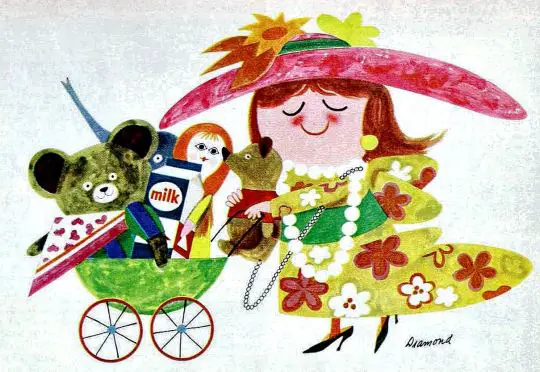Breakfast has changed much over time, at least in the West, which in turn has influenced other cultures. These changes have of course been reflected in art and literature.
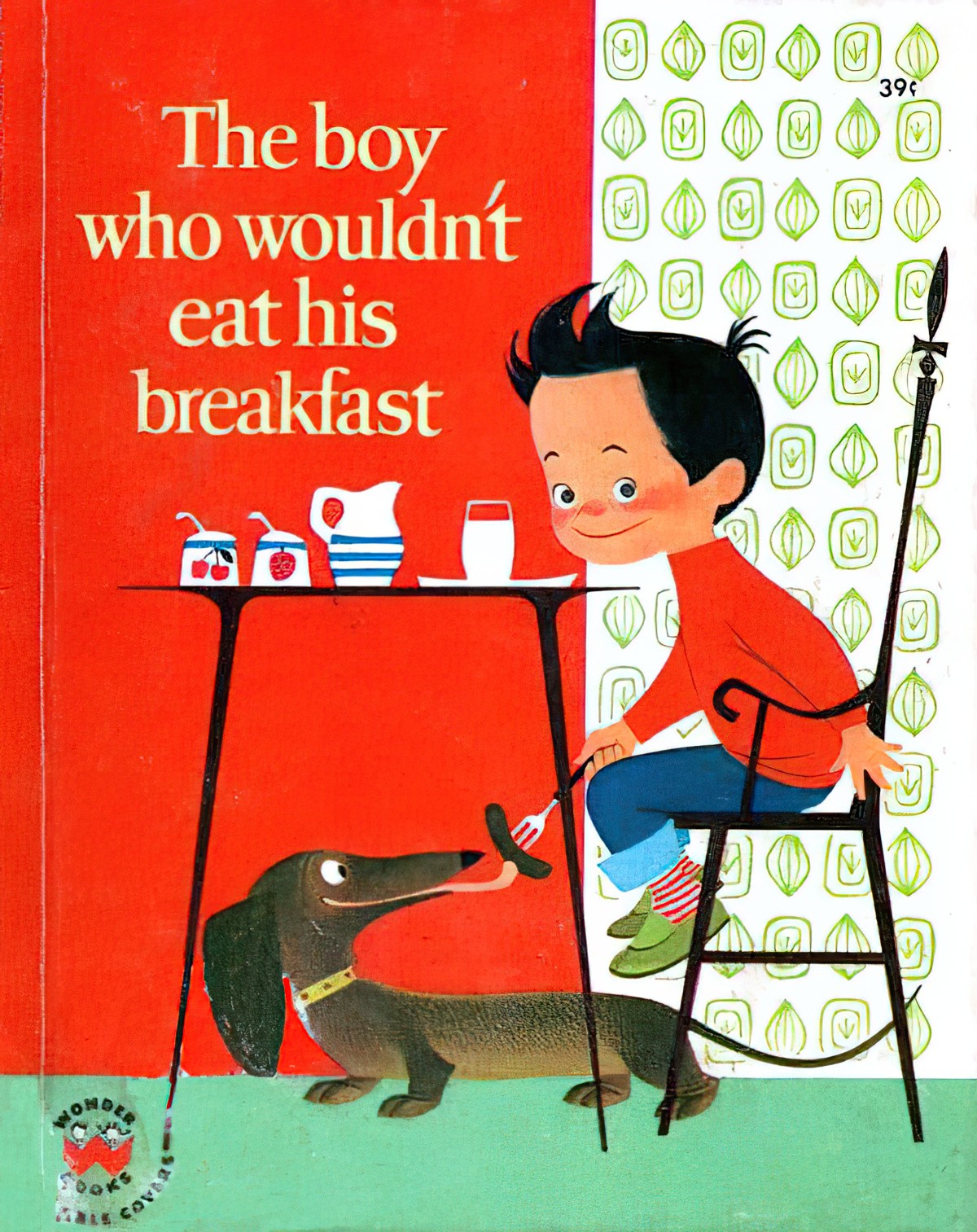
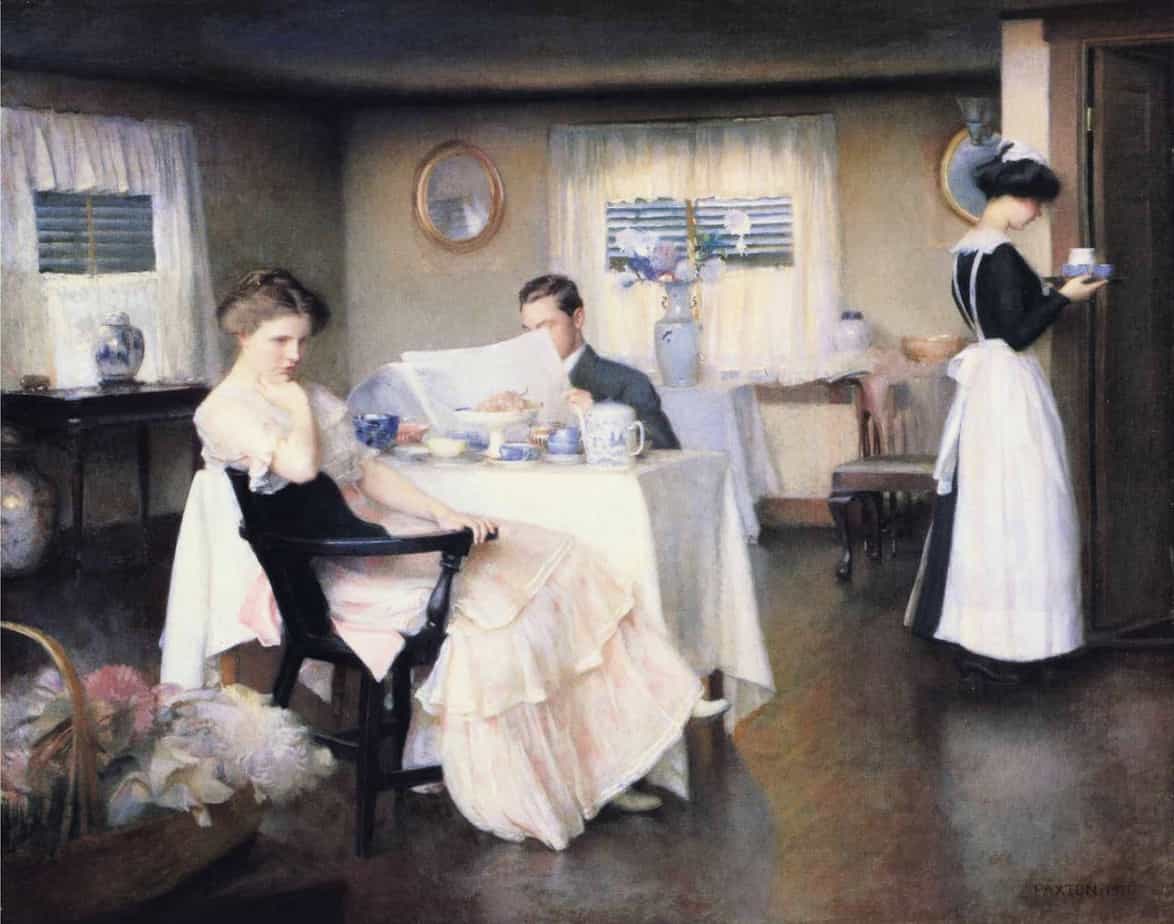
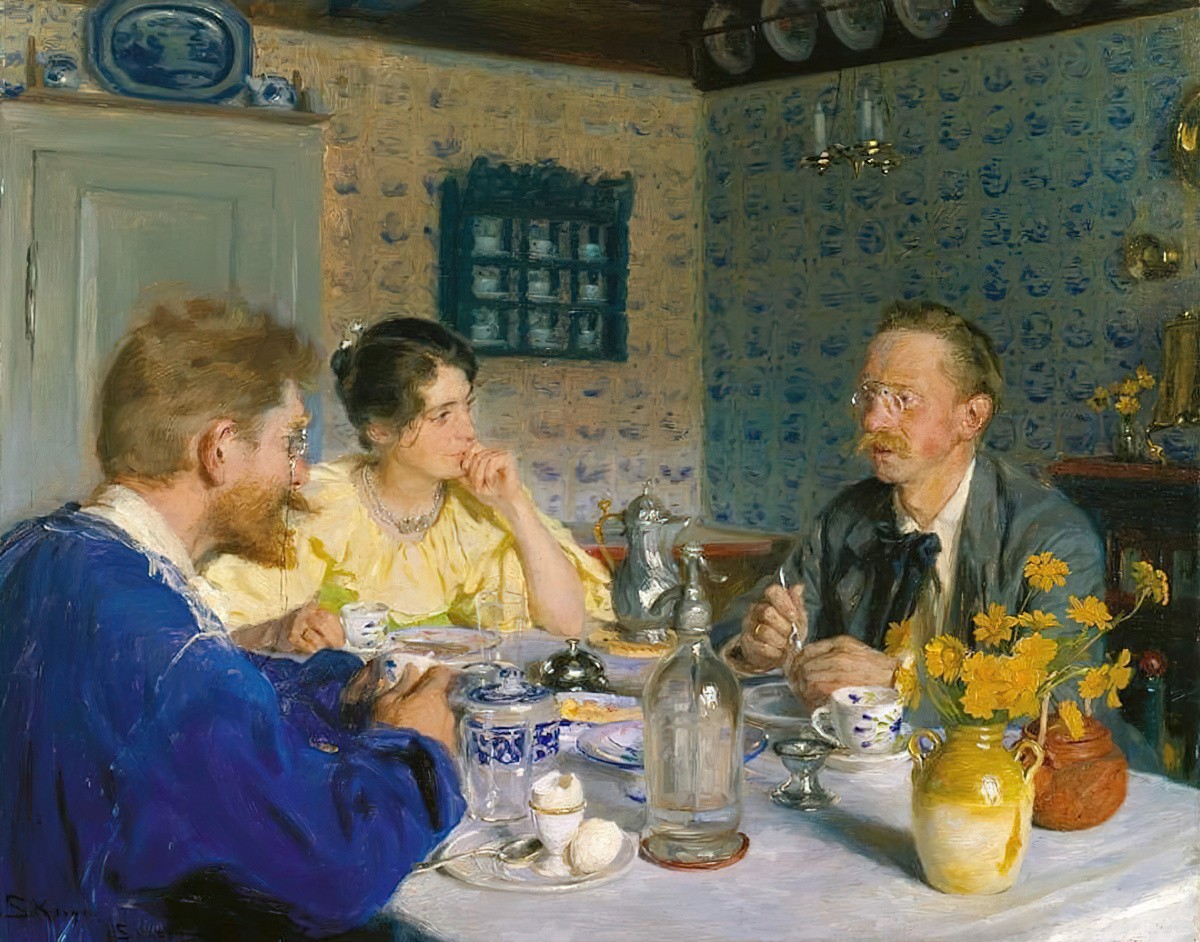
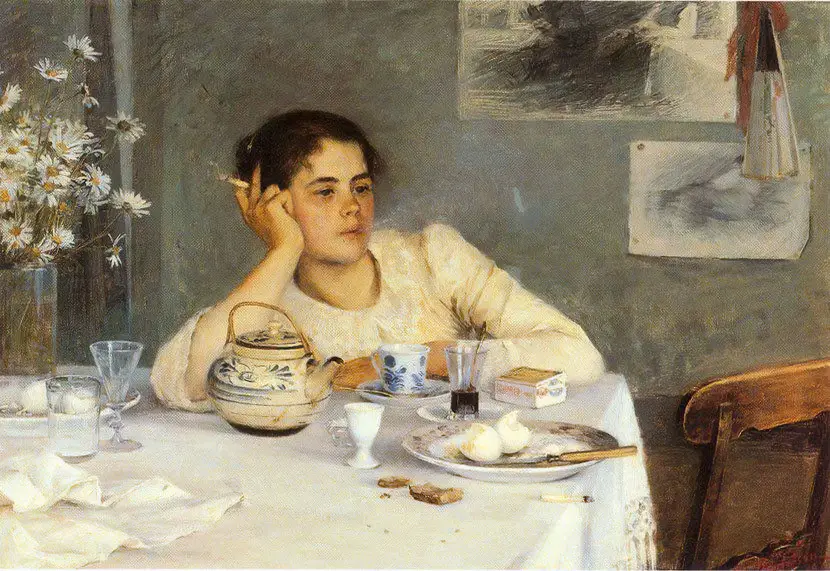
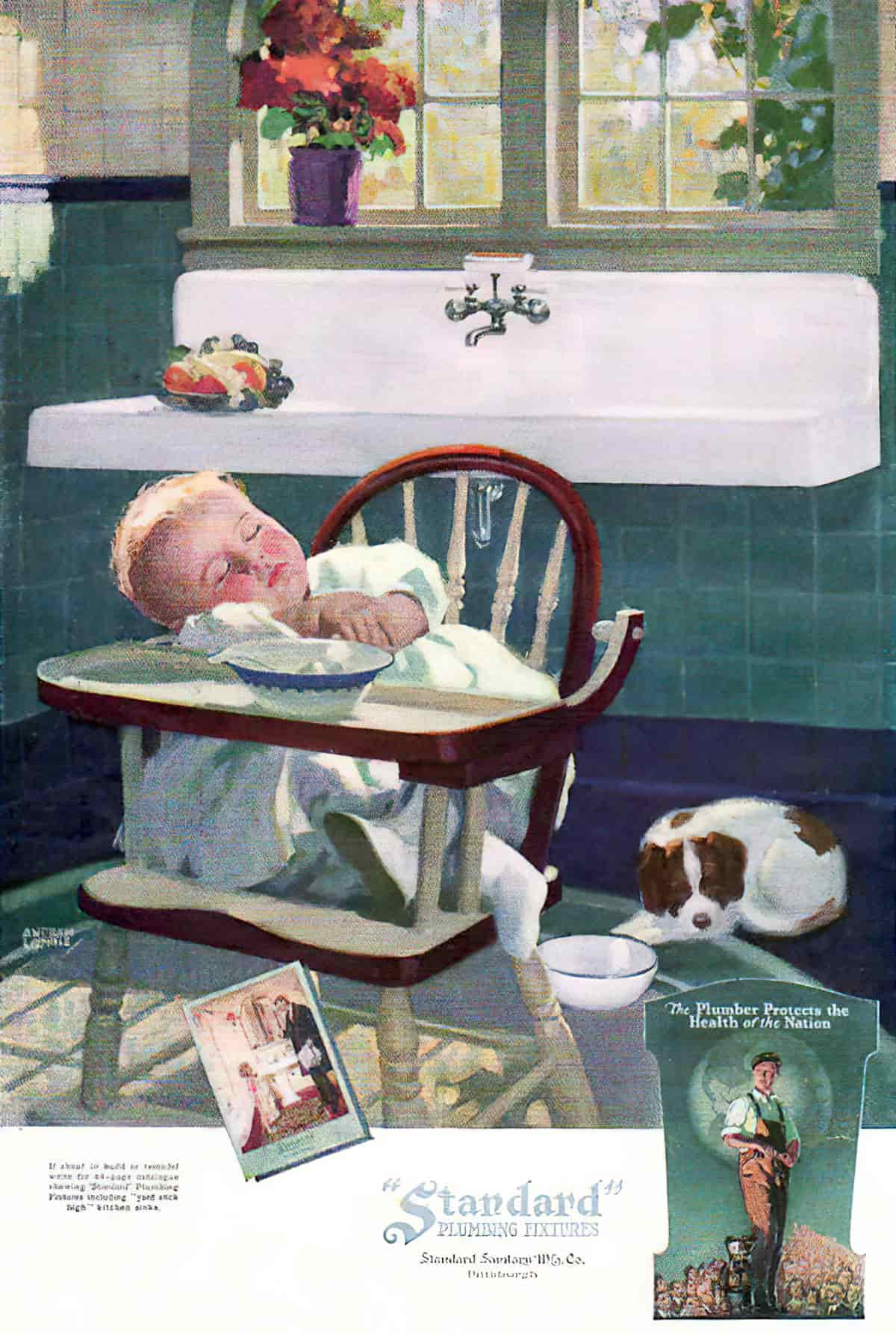
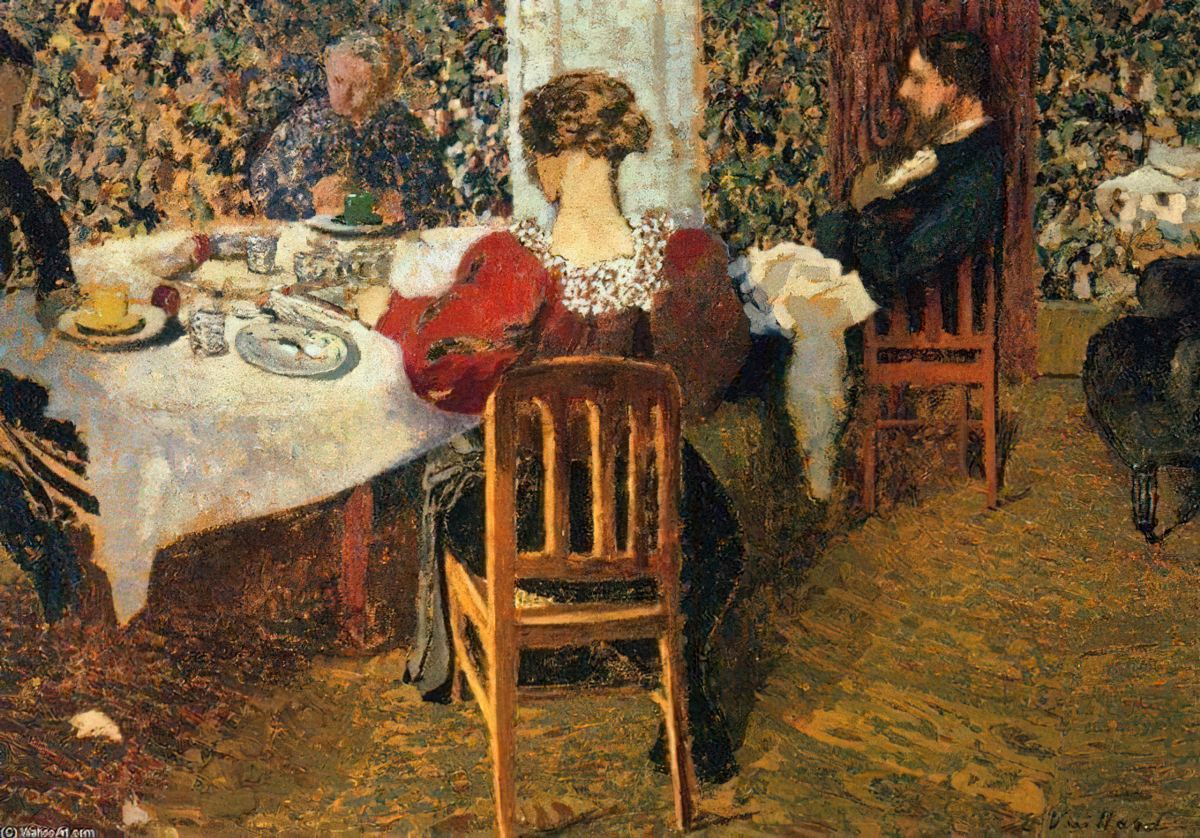


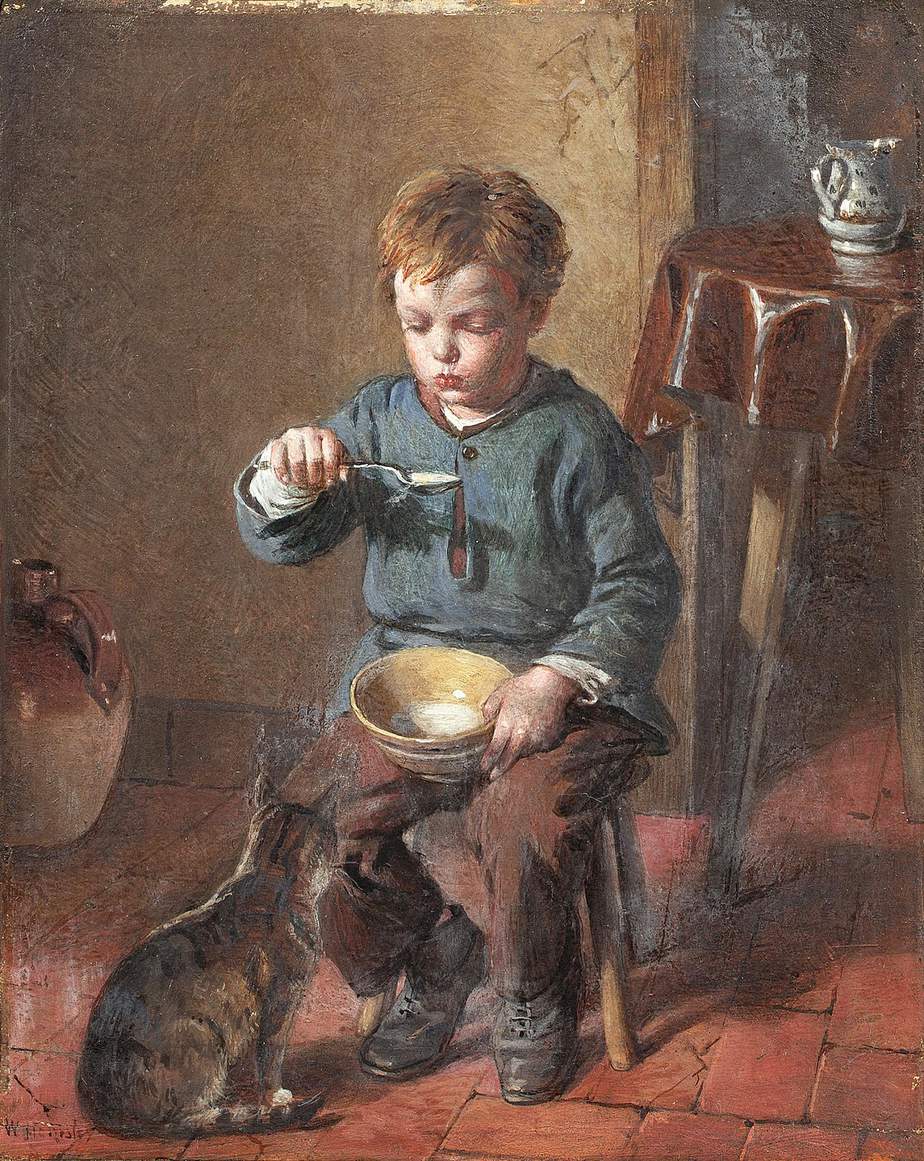
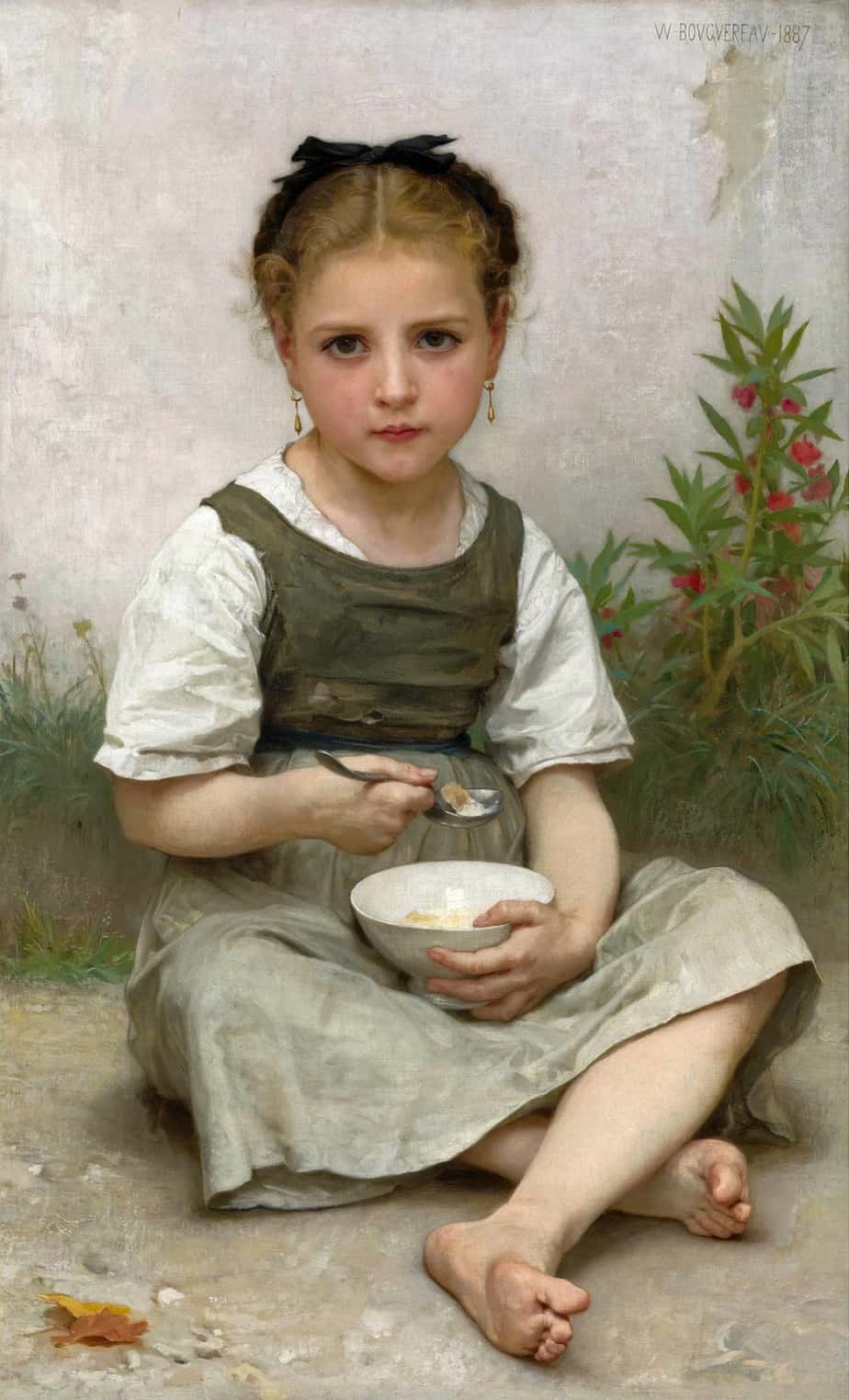
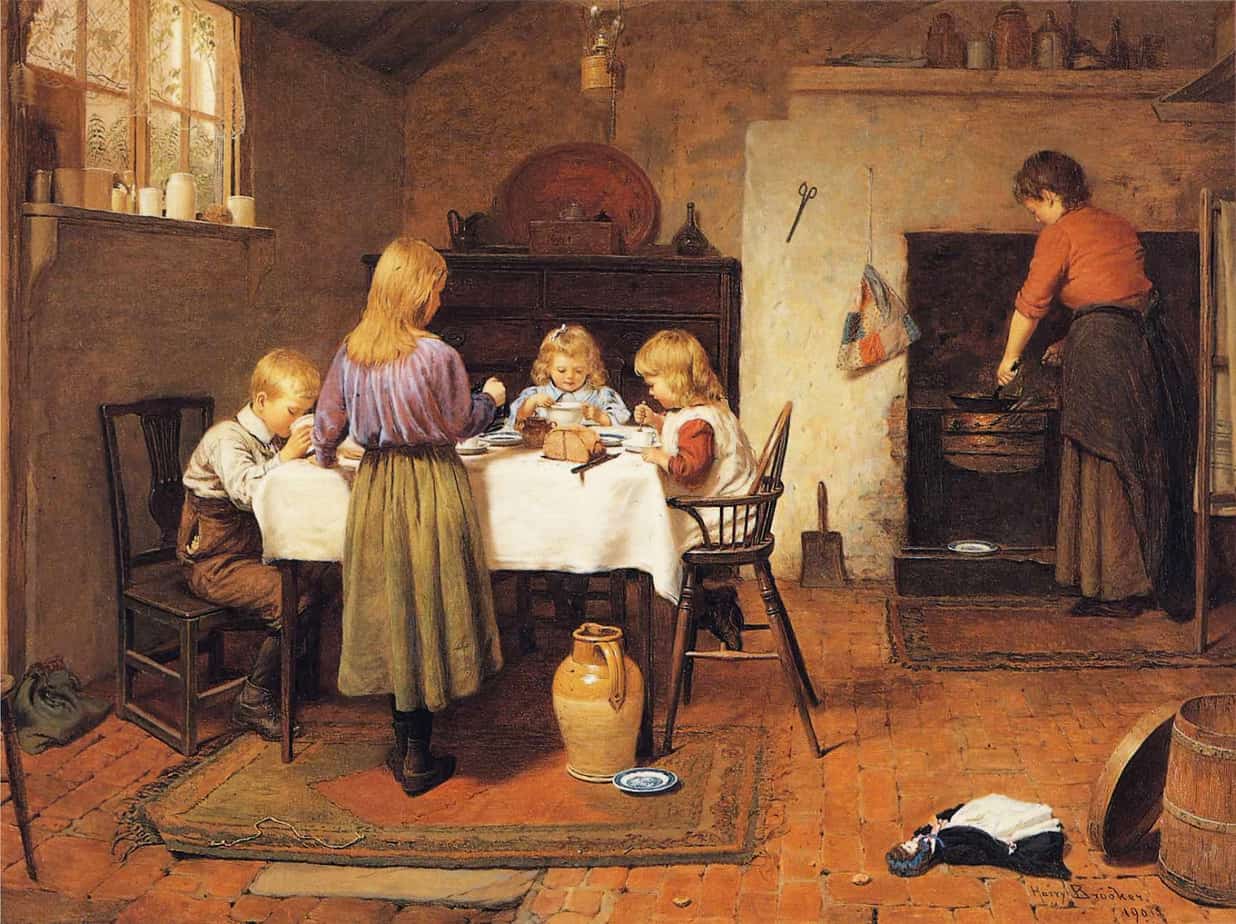
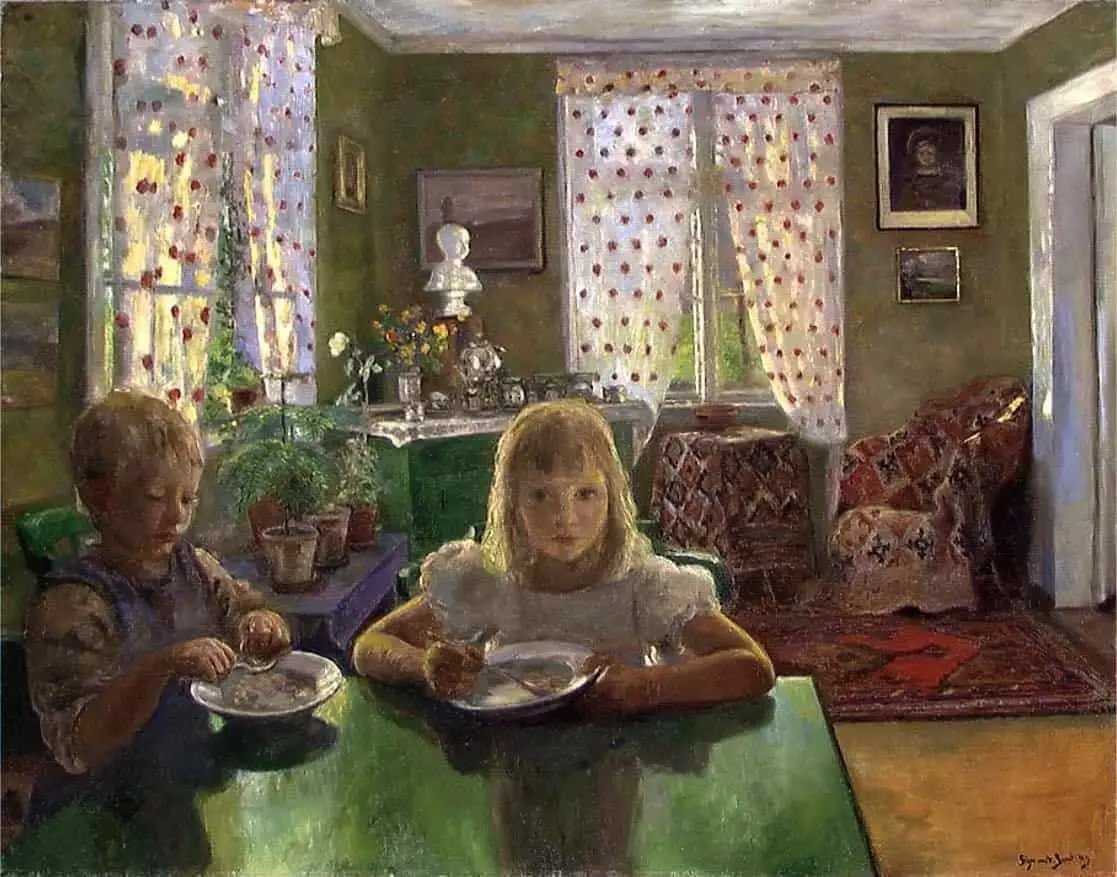
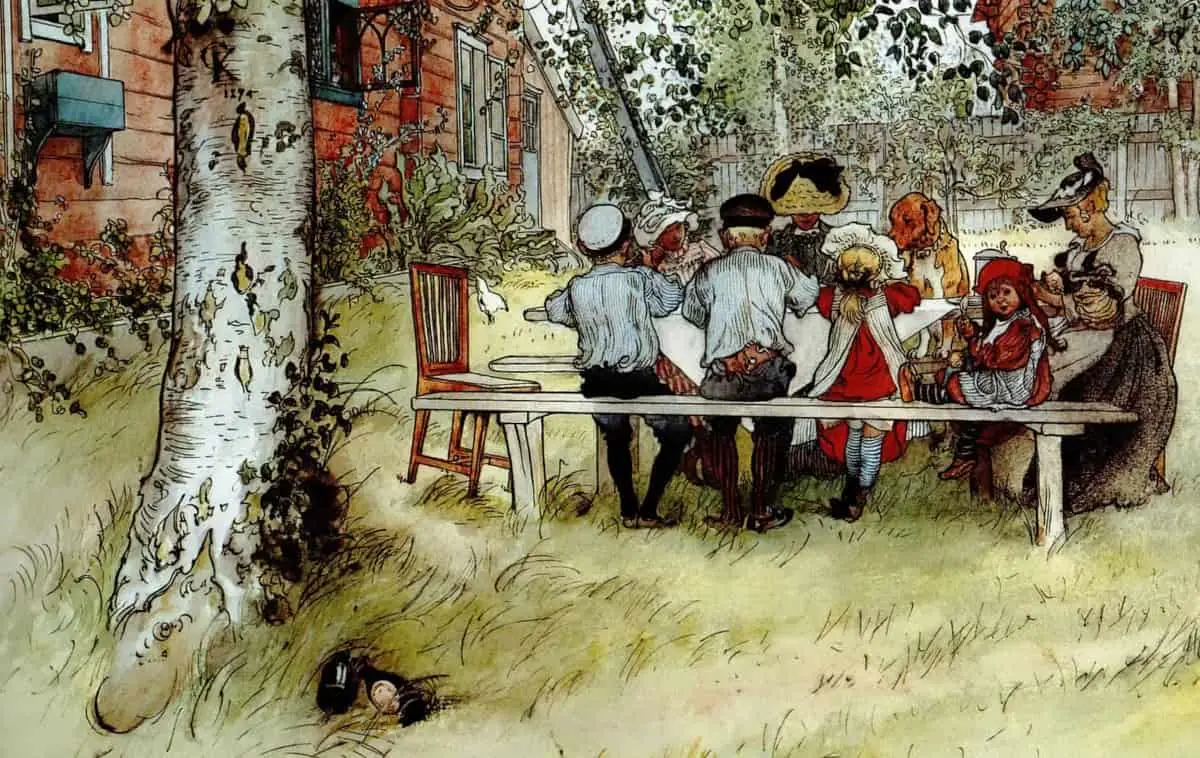
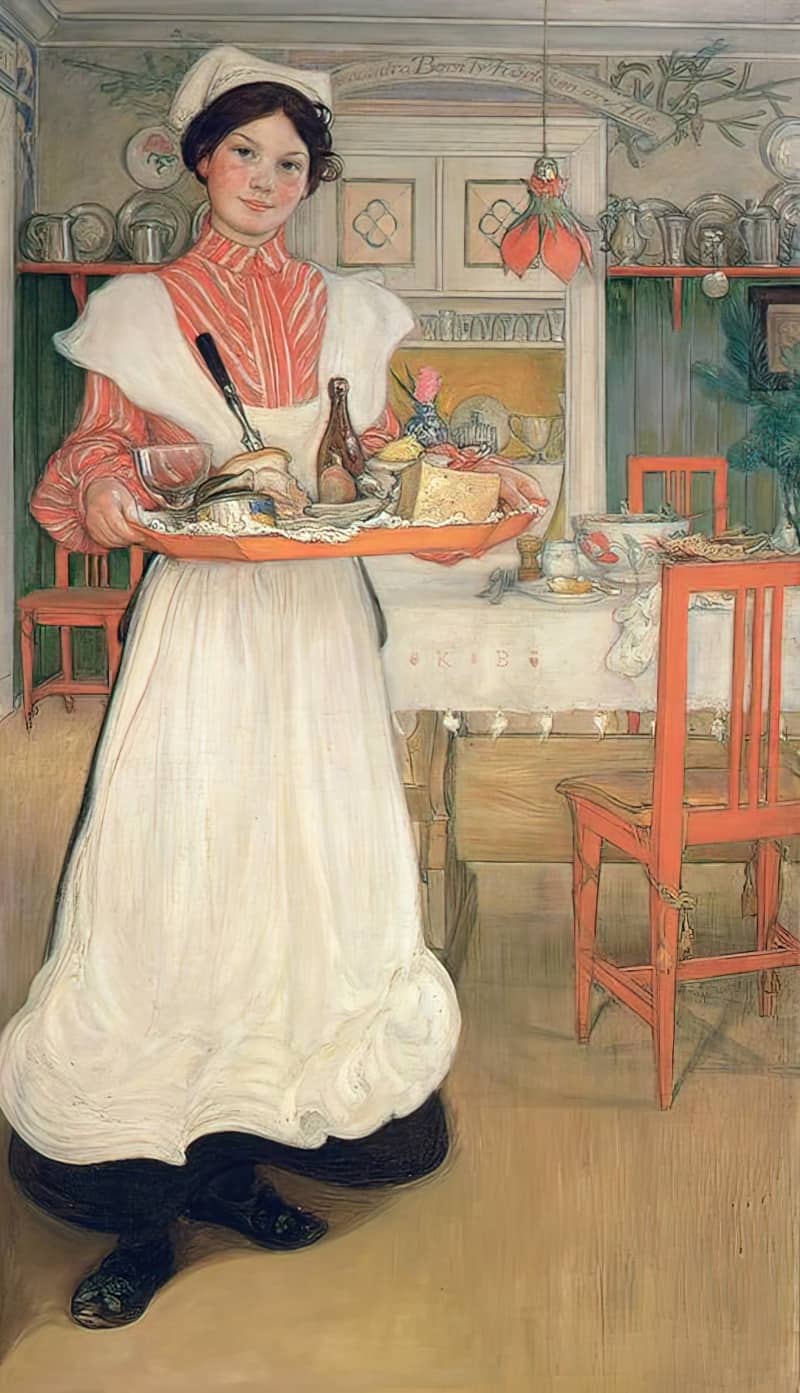
1848 England
“As for me, I was hungry, and contented myself with silently demolishing the tea, ham, and toast…” wrote Anne Bronte in The Tenant Of Wildfell Hall, first published in 1848. But the times were already changing. The health of Britons was already being affected by the industrialisation of food. Bronte writes several pages later of the vicar, in uncomplimentary terms:
He had a laudable care for his own bodily health — kept very early hours, regularly took a walk before breakfast, was vastly particular about warm and dry clothing, had never been known to preach a sermon without previously swallowing a raw egg — albeit he was gifted with good lungs and a powerful voice, — and was, generally, extremely particular about what he ate and drank, though by no means abstemious, and having a mode of dietary peculiar to himself, — being a great despiser of tea and such slops, and a patron of malt liquors, bacon and eggs, ham, hung beef, and other strong meats, which agreed well enough with his digestive organs, and therefore were maintained by him to be good and wholesome for everybody, and confidently recommended to the most delicate convalescents or dyspeptics, who, if they failed to derive the promised benefit from his prescriptions, were told it was because they had not persevered, and if they complained of inconvenient results therefrom, were assured it was all fancy.
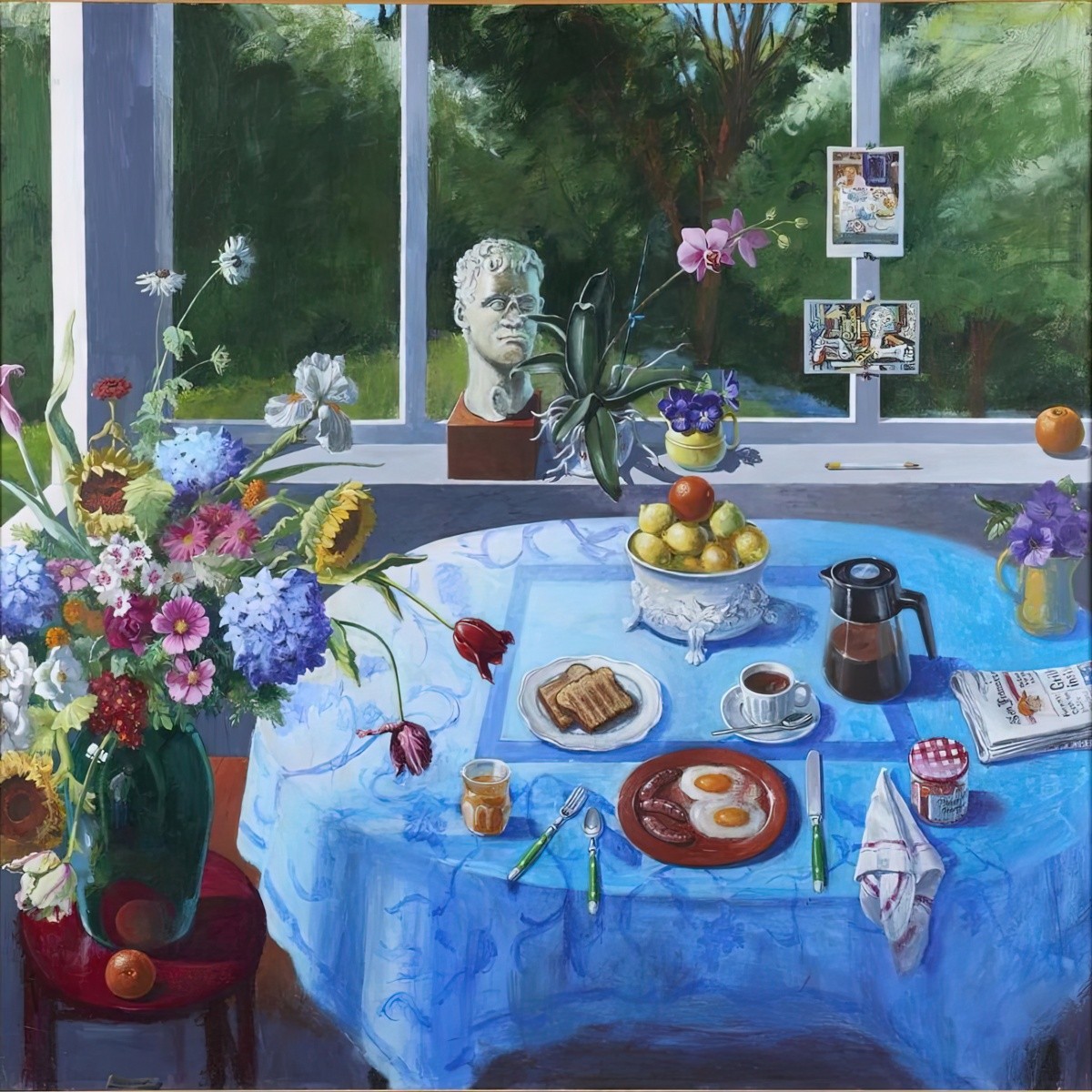
The Edwardian Era In England (1901–1910)
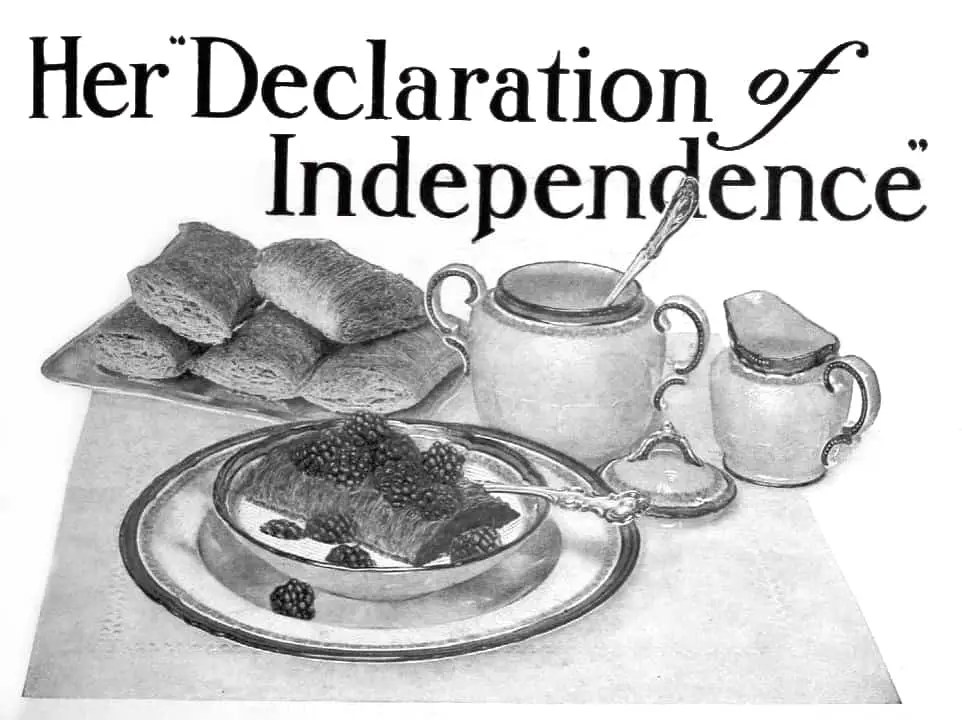
Breakfast Cereal: A Global History
Breakfast Cereal: A Global History (Reaktion, 2023) by Dr. Kathryn Dolan presents the long, distinguished and surprising history of breakfast cereal.
Simple, healthy and comforting, breakfast cereals are a perennially popular way to start the day around the world. They have a long, distinguished and surprising history – around 10,000 years ago, with the advent of agriculture, people began breaking their fast with porridges made from wheat, rice, corn and other grains. It was only in the second half of the nineteenth century, however, in the United States, that a series of entrepreneurs and food reformers created the breakfast cereals we recognize today: Kellogg’s Corn Flakes, Cheerios and Quaker Oats, among others.
In this global, entertaining and well-illustrated account, Dr. Dolan explores the history of breakfast cereals, including many historical and modern recipes that the reader can try at home.
This interview was conducted by Dr. Miranda Melcher whose doctoral work focused on post-conflict military integration, understanding treaty negotiation and implementation in civil war contexts, with qualitative analysis of the Angolan and Mozambican civil wars.
New Books Network
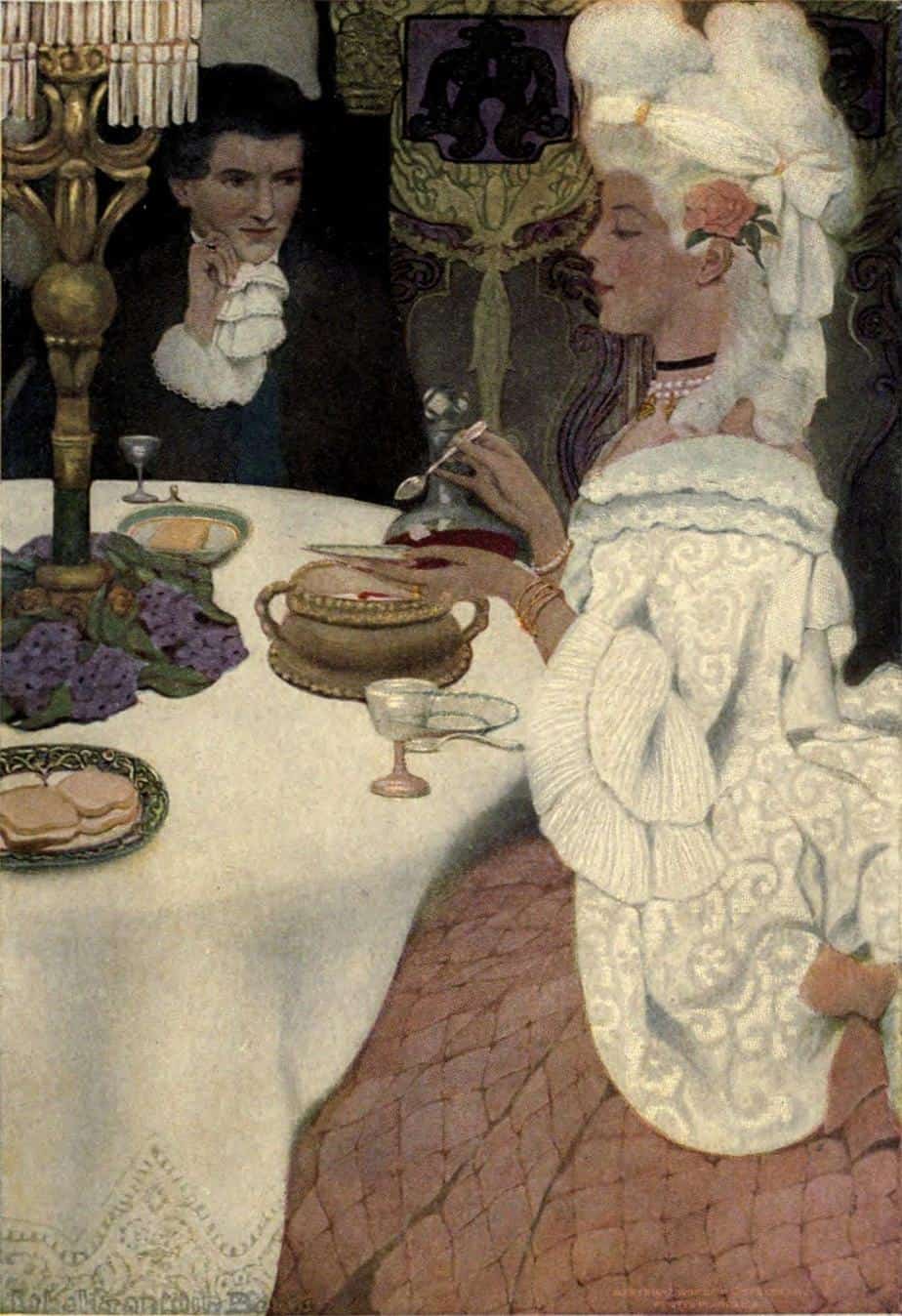
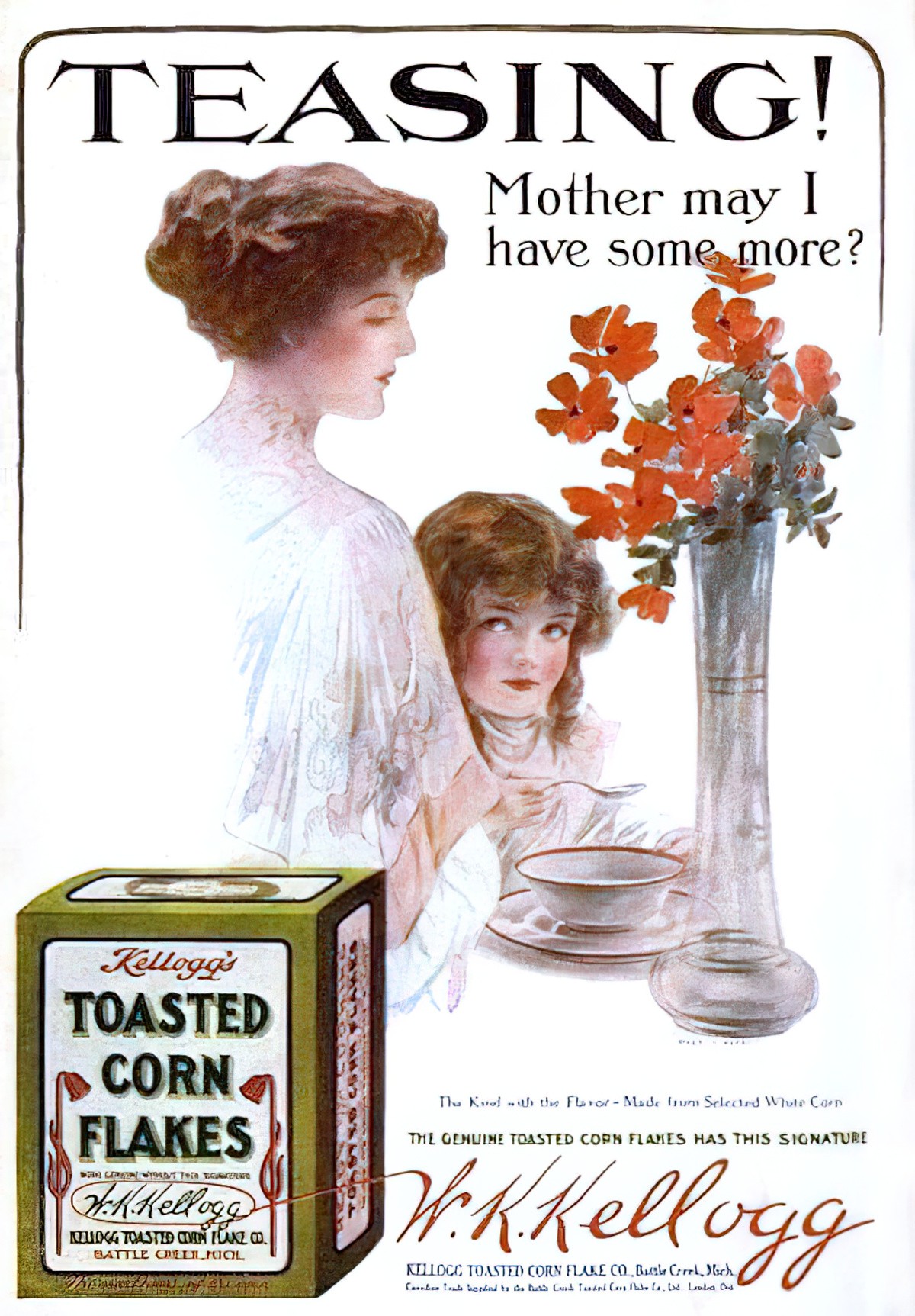
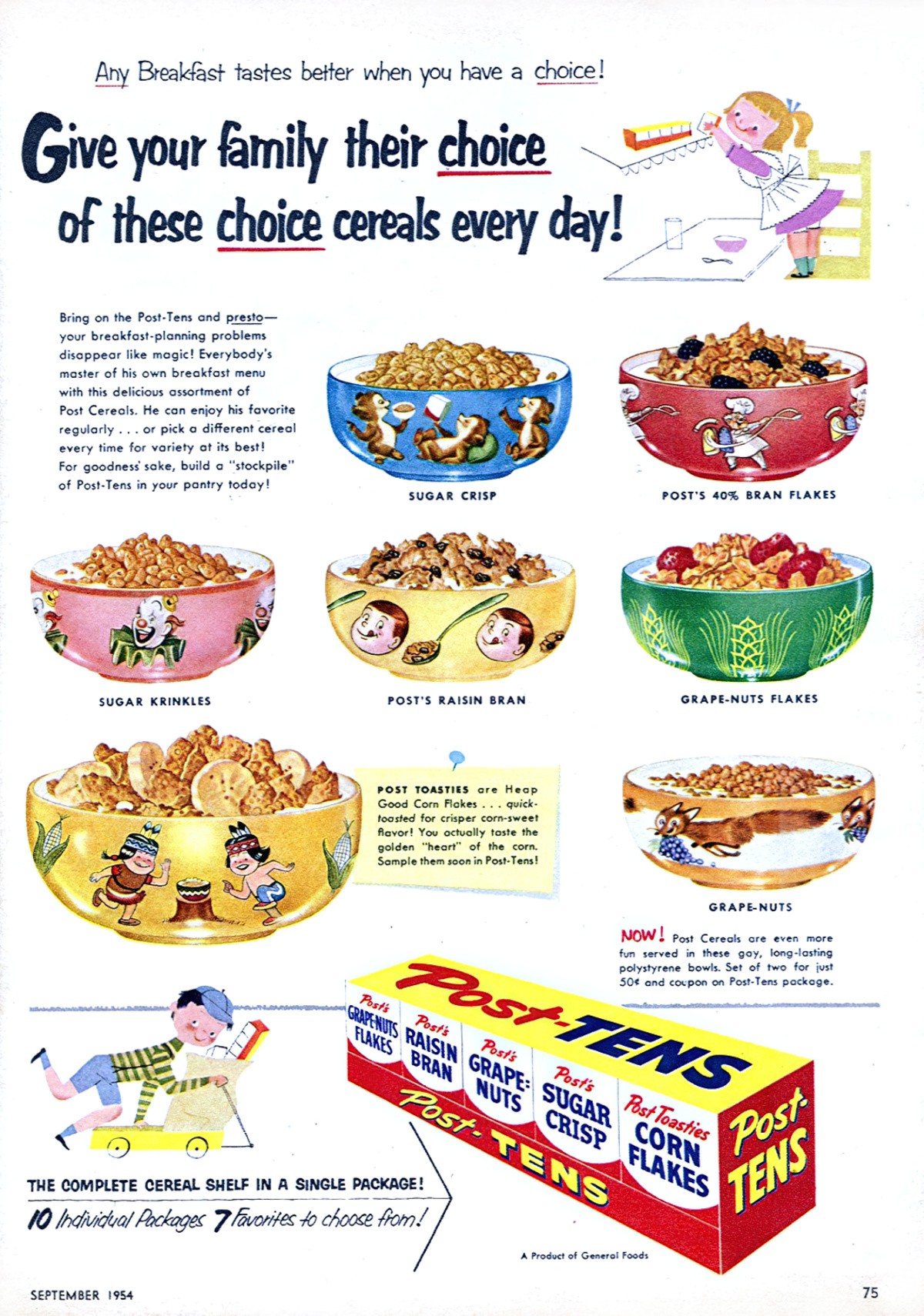
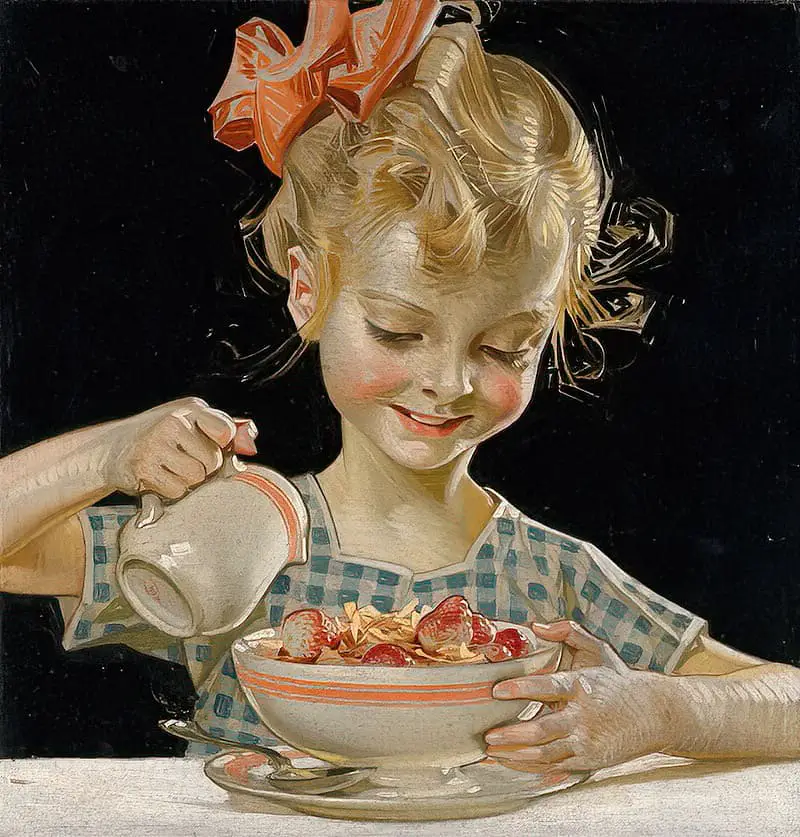
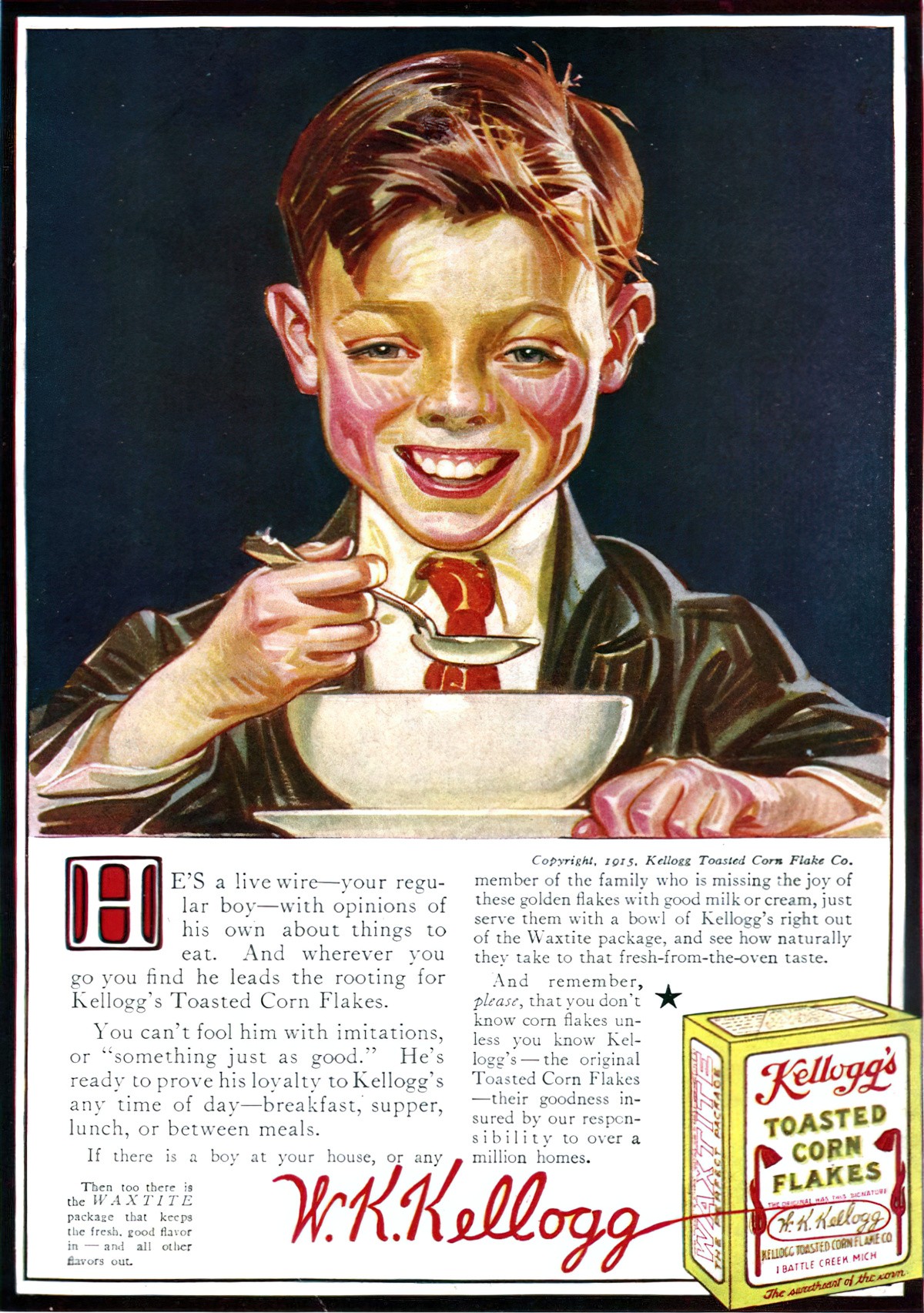
At nine in the morning, servants would be required to do as following:
9 a.m.: The family breakfast is served. While the servants have had porridge or, if they are lucky, bacon and eggs, their employers will be greeted with an array of silver covered dishes with bacon, eggs, kippers, kedgeree, devilled kidneys, freshly baked rolls and fruit.
from Life Below Stairs: True Lives of Edwardian Servants by Alison Maloney
The servants themselves had a less lavish breakfast, but they did often get bacon and eggs if they worked at an opulent house. If they stayed in their working class homes they would’ve been stuck with porridge.
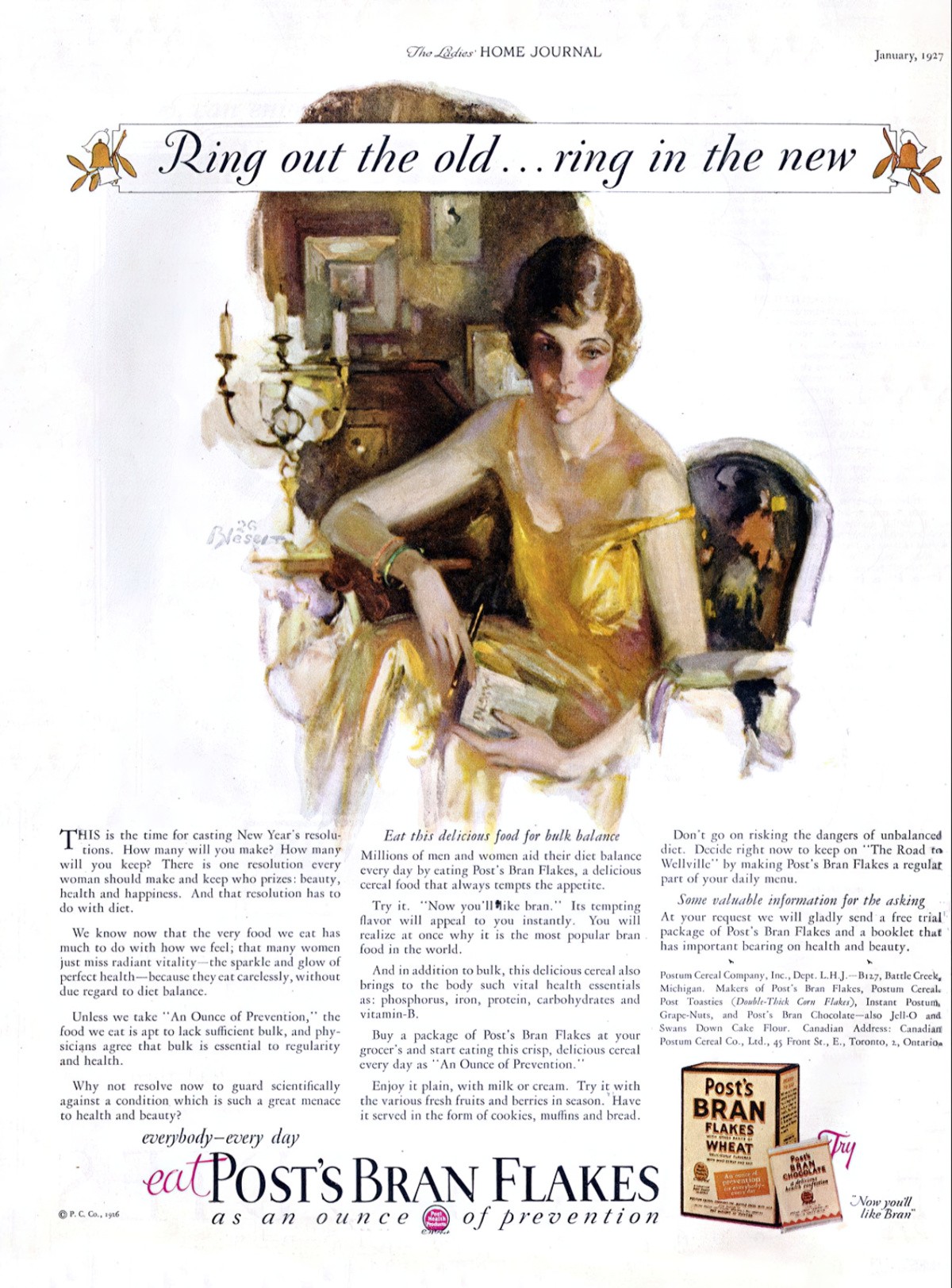
1929 Rural America
In A Long Way From Chicago, two children visit their hillbilly grandmother each summer. There, they eat pancakes and corn syrup, fried ham and potatoes and onions for breakfast — as much as they like. Then the depression sets in.
1943 Rural America
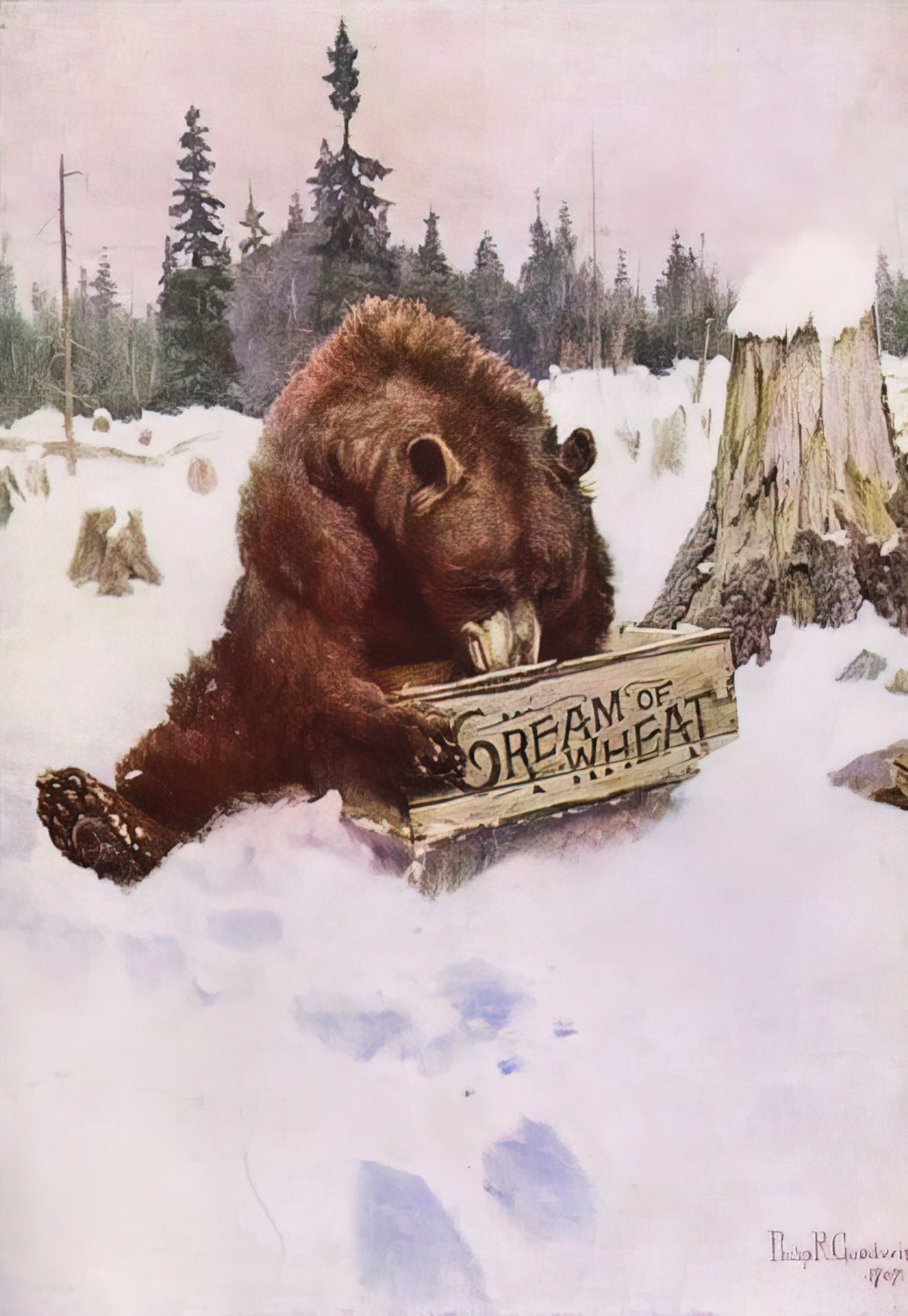
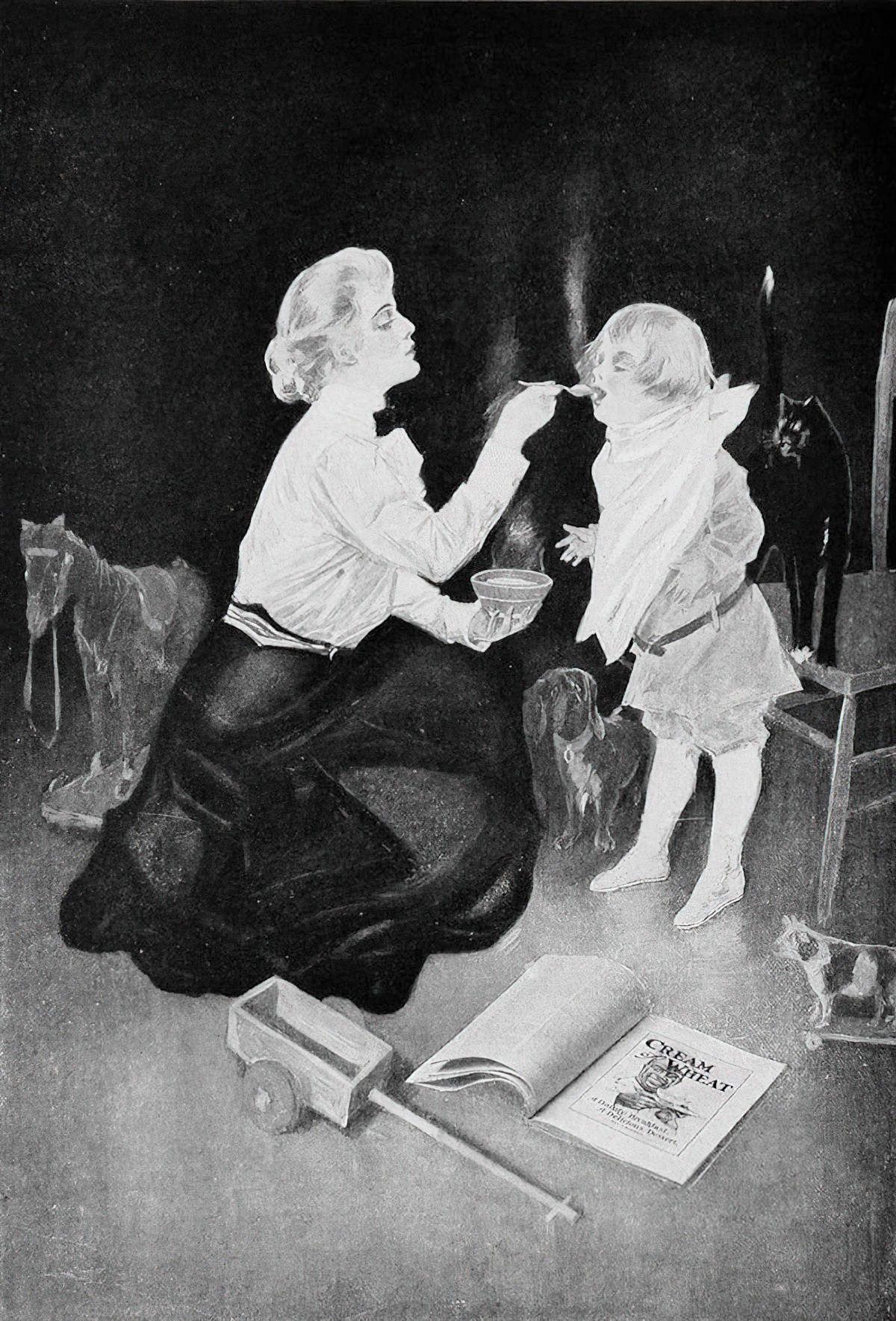

Wolf Hollow by Lauren Wolk is set during WW2 and is heavily based on stories told to her by her own mother. A breakfast scene shows the exact era in which mothers quit cooking breakfasts for their brood:
“Well, look who’s up,” my mother said as she came in the door, a basket of eggs in her hand. She tied on an apron and said, “Scrambled or fried?”
“I already had cereal.”
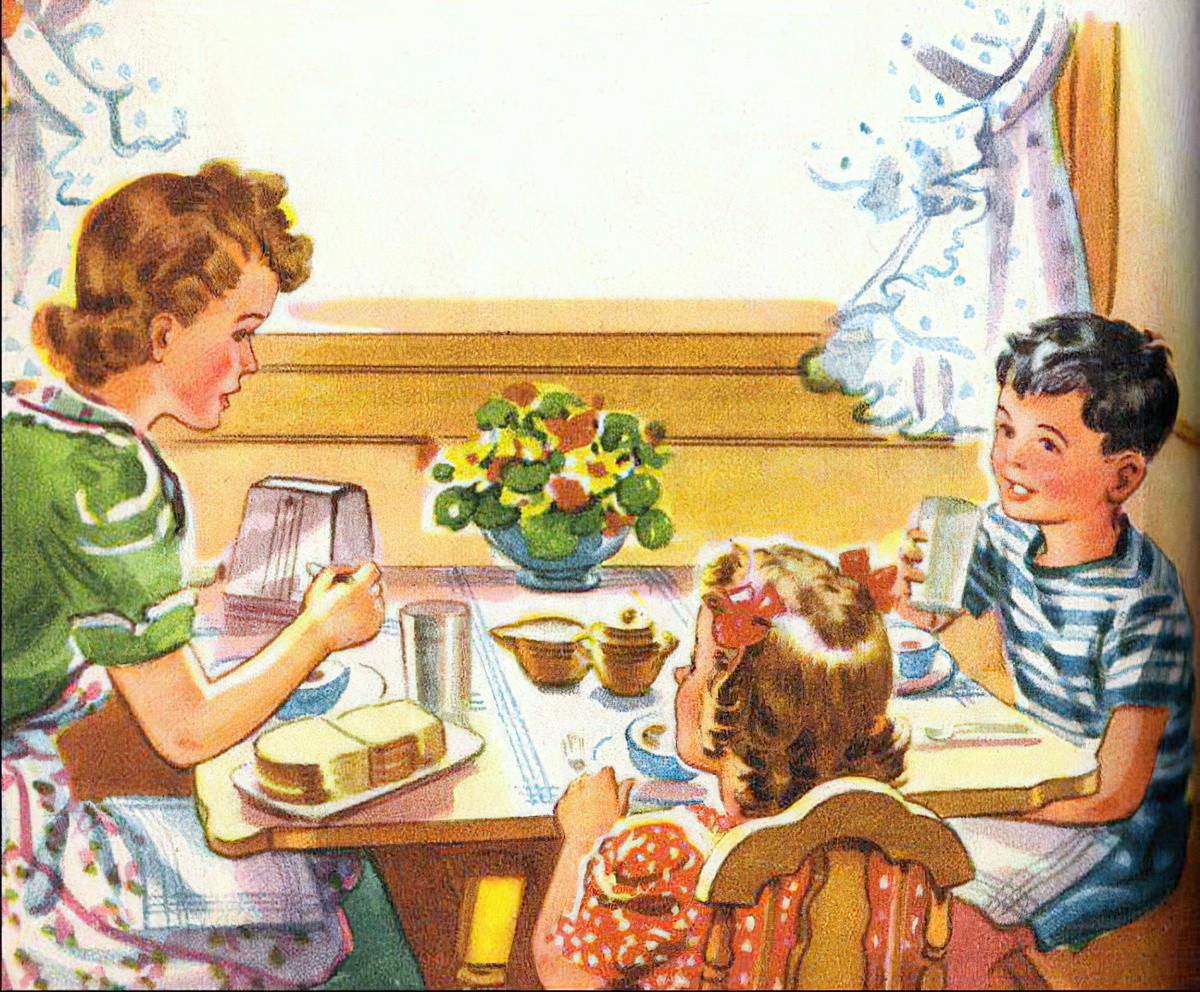
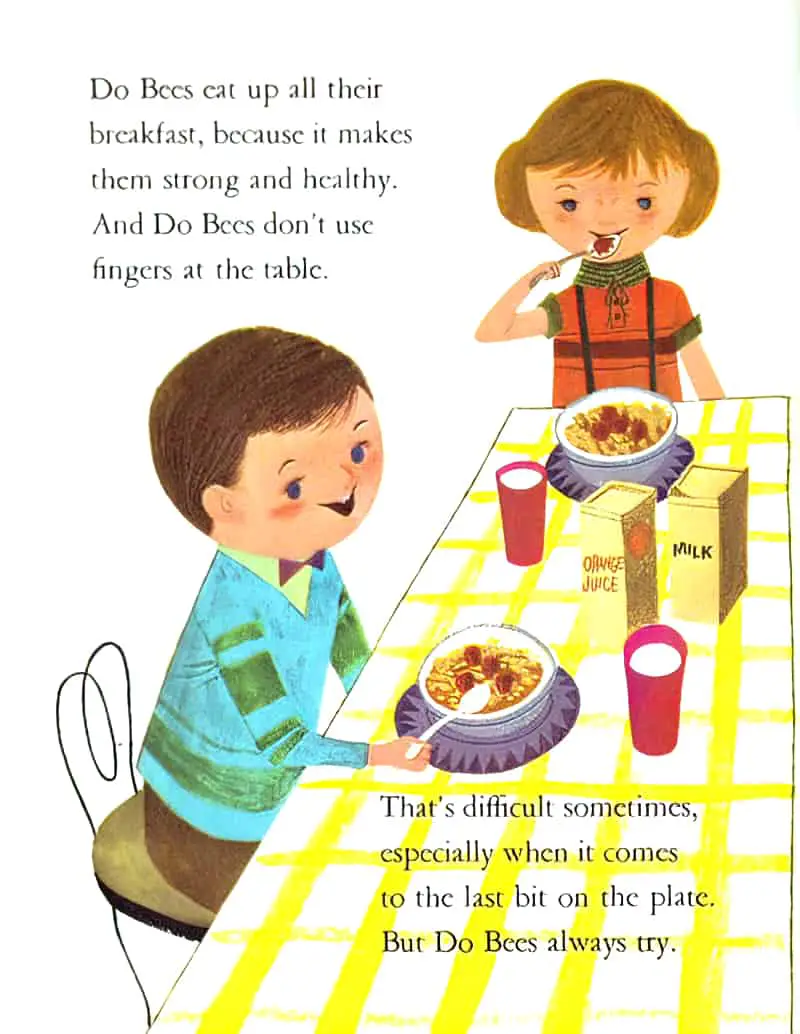
1975 (Australia vs America)
Exchange Student is about a 14-year-old Sydney girl who spends a year in Ohio, USA. This observation marks the exact era American breakfast traditions started to be adopted here in Australia:
“My brother will never believe the things they have on this menu,” she said. “He’d go wild over all these pancakes and syrup and the blueberry waffles and things. He’s always complaining about being sick of having eggs and bacon for breakfast.”
Exchange Student by Estelle Grey
1981 England
From See You Thursday by Jean Ure:
For breakfast there were sausages and tomatoes. Mrs Fenton announced the fact with a brisk: ‘Here we are, then…sausages at twelve o’clock, tomatoes at six.’ Marianne wondered what on earth she was talking about, until slowly it dawned on her that she was describing for Mr Shonfeld’s benefit the postiion of things on the plate. … They never had sausages; not for breakfast. Sausages were supper. She couldn’t eat them at quarter to eight in the morning.
So what did Marianne prefer for breakfast, if not sausages and tomatoes?
To spare Mr Shonfeld’s feelings, she forced herself to eat it. Her mother would only say: ‘What’s the matter with those sausages?’ if she didn’t, and then she would have to say that she didn’t feel like sausages and then Mr Shonfeld might start thinking about bacon and eggs and wondering if it were his fault.
It’s not cereal and toast that Marianne is missing, rather another kind of meat. Later, taking Mr Shonfeld shopping at the supermarket, she recommends eggs, because eggs are nutritious.
***
Season six of Mad Men is especially interesting because it’s set in that period of American history in which the ad men were charged with the job of persuading the public that margarine is healthier than butter, and that extruded cereals should be taken at breakfast, straight from the supermarket shelves, rather than meat from the local butchery.
Those ad men did a wonderful job on us. Now, even though every bit of good science is telling us to go back to eating the pre-industrial way, our idea of a ‘healthy’ breakfast is so embedded in our culture that it’s almost impossible to think in any other way. It all changed in the 80s.
1980s America
Guthrie brought two thick crockery plates of steaming eggs and buttered toast to the table and set them down and the boys spread jelly on the toast and began to eat at once, automatically, chewing, leaning forward over their plates. He carried two glasses of milk to the table.
Plainsong by Kent Haruf (1999), describing a farm breakfast in 1980s Denver
Take this Whitbread award winning passage from 1988:
Every morning, after walking the dog, I wait for the post. Our postman, despite his vigorous life, does not look healthy. His skin is showing signs of trouble within; a tinge has spread over his cheeks, a sort of threadwork of veinous blood vessels, suggesting cardiovascular irregularities. The surface of his skin is being irrigated by diverted blood; that is my diagnosis. I would guess that the beneficial effects of walking miles every day are nullified by his daily breakfast of sausages, egg and bacon. I have seen him with his fellow postmen gathered for these huge breakfasts at Lil’s Cafe, near the Electric Cinema. There’s hardly a person left in the developed world who doesn’t not know that this sort of diet is fatal, yet Cockneys must have it. All Cockneys are unhealthy as a result.
Leading The Cheers by Justin Cartwright
It’s no accident that literary breakfasts parallel exactly the food trends of our society. Equally interesting: breakfasts of toast, margarine and cereal also mark the beginning of the diabetes epidemic. Since fat helps to regulate blood sugar, this is no coincidence.
MORE ON BREAKFASTS
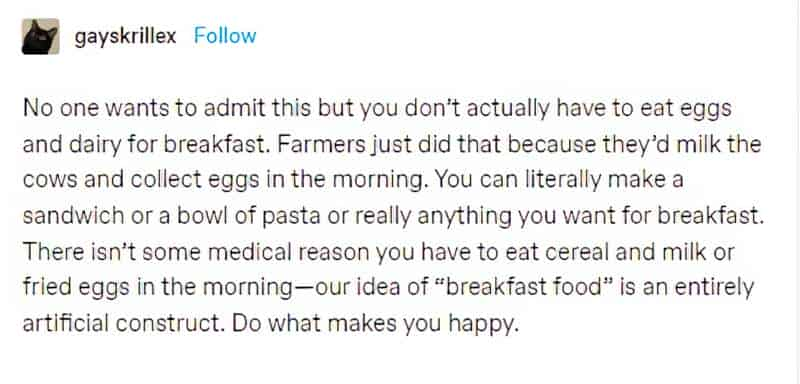
Have we always eaten these three meals a day? from BBC News Magazine
Do we really need all three? Some people think not.
Breakfast Is A Liar, Might Not Be Most Important Meal Of The Day from Jezebel. The Paleo eating community has been saying this all along, by the way. If you’re a paleo person you eat breakfast when you’re hungry, even if it turns into lunch. You also eat vegetables for breakfast. This might seem totally weird until you realise that even the government issue food plate does include a large portion of vegetables, and nowhere does it say you get a free pass for breakfast time.
Children’s Breakfasts Around The World from The New York Times
I Broke Breakfast, about how Americans eat an unvaried breakfast, from The Atlantic
There is a secret, wholesome indulgence to eating in bed which perhaps explains why it has not received the uniformily good press of other things which go on in bed…
from The Eating in Bed Cook Book by Barbara Ninde Byfield, children’s writer and illustrator
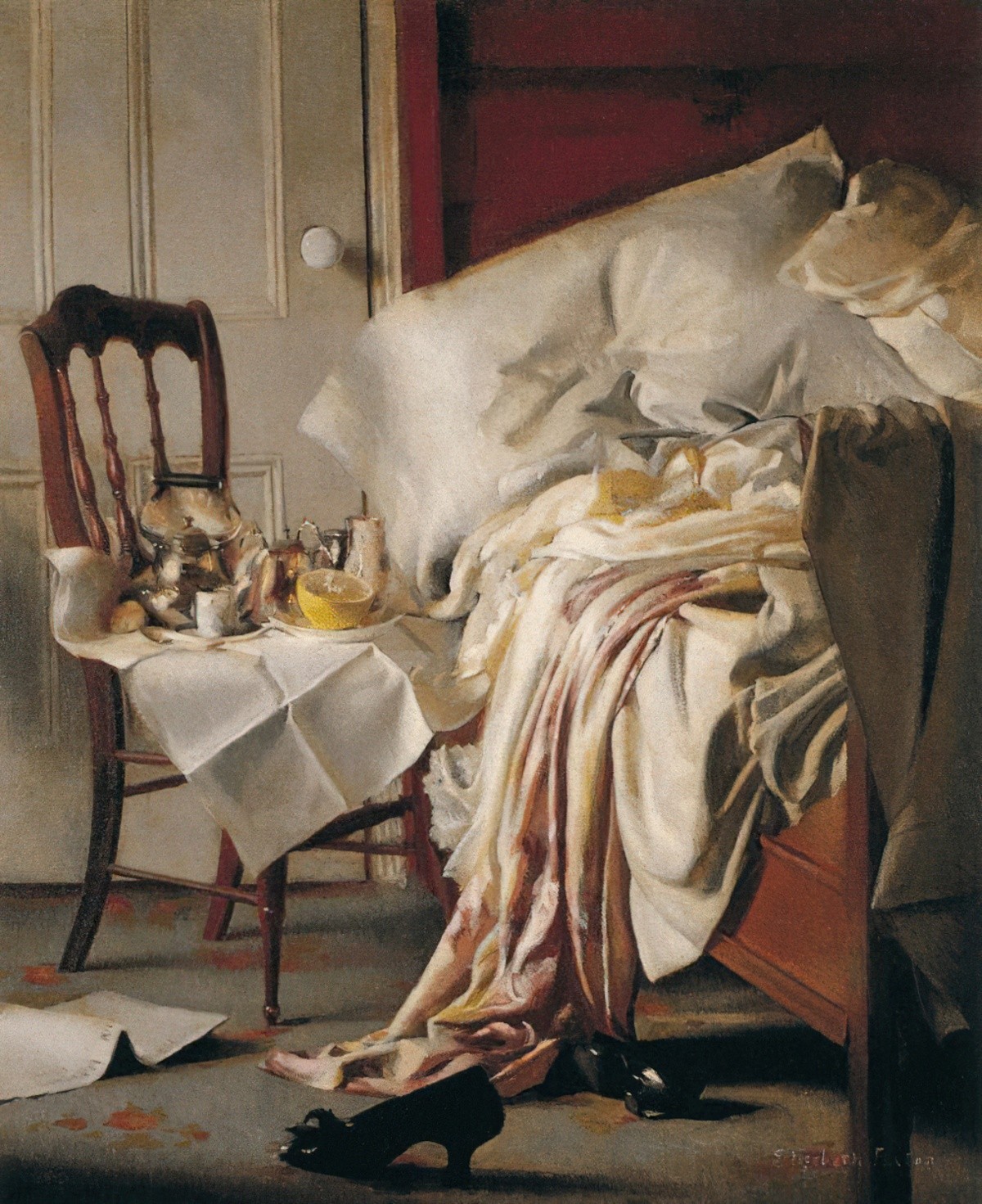
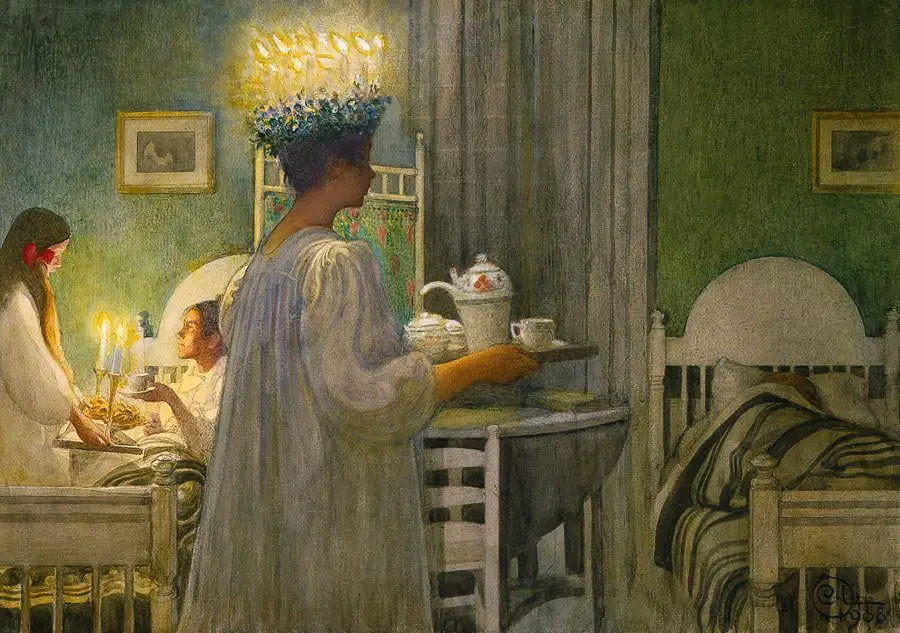
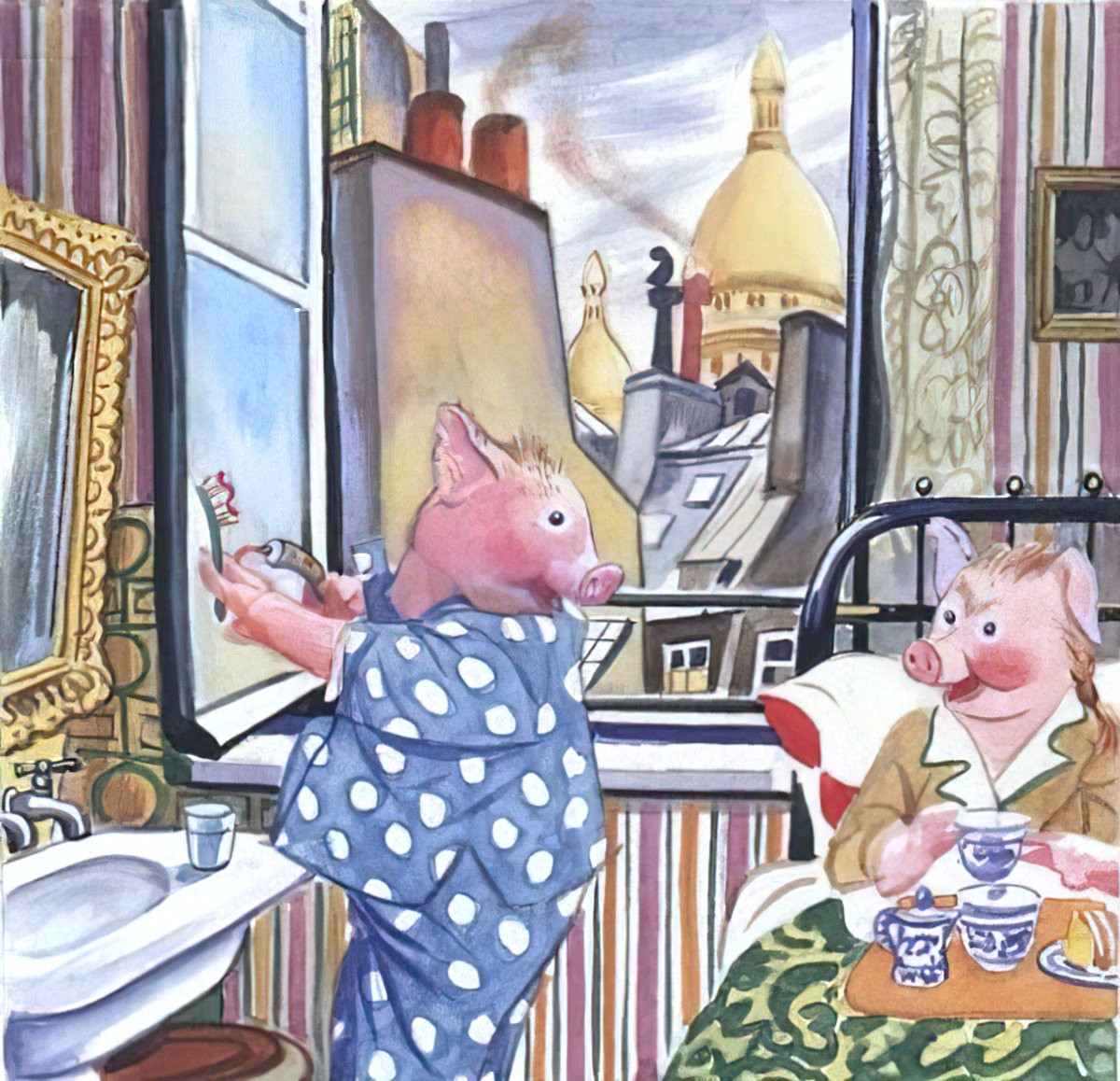
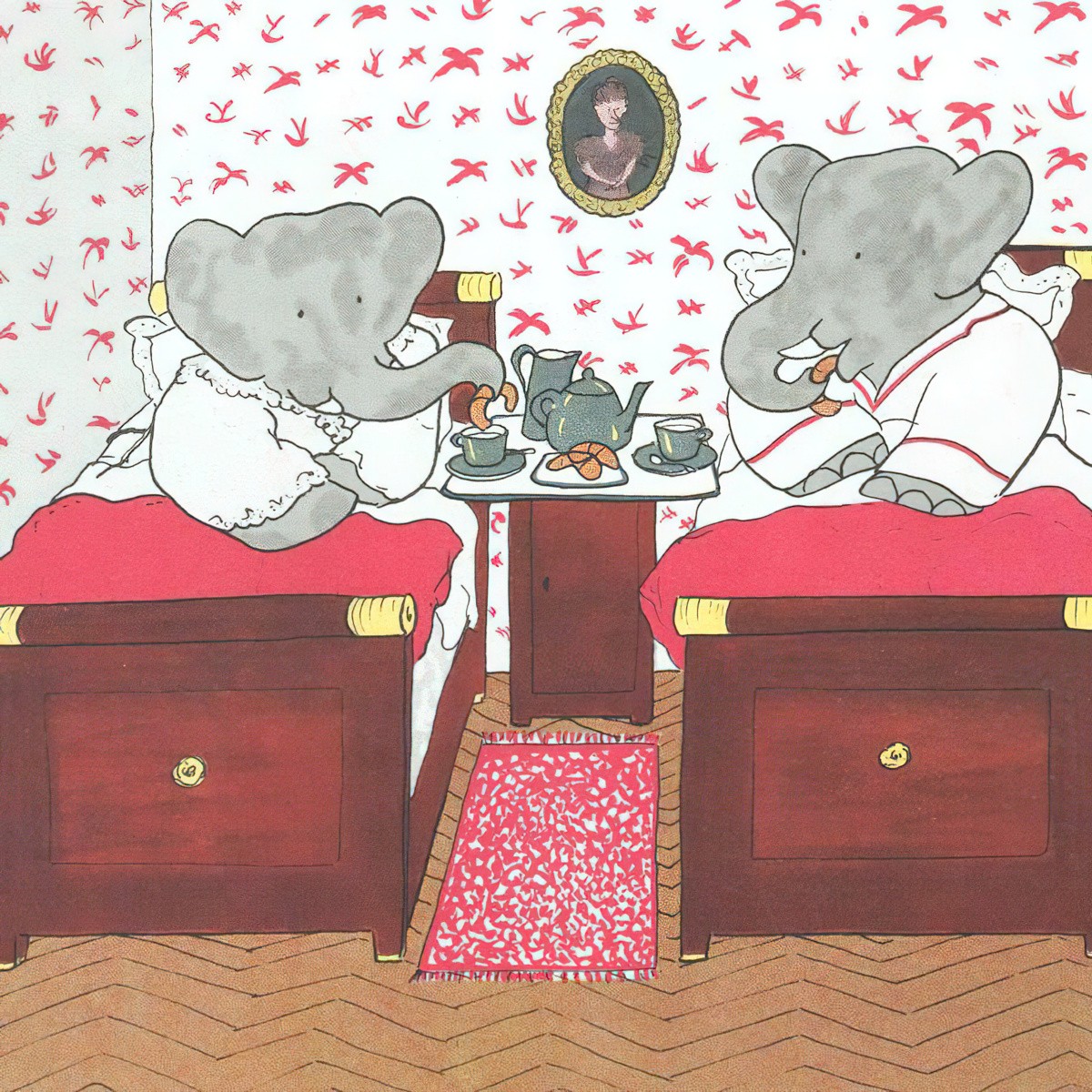
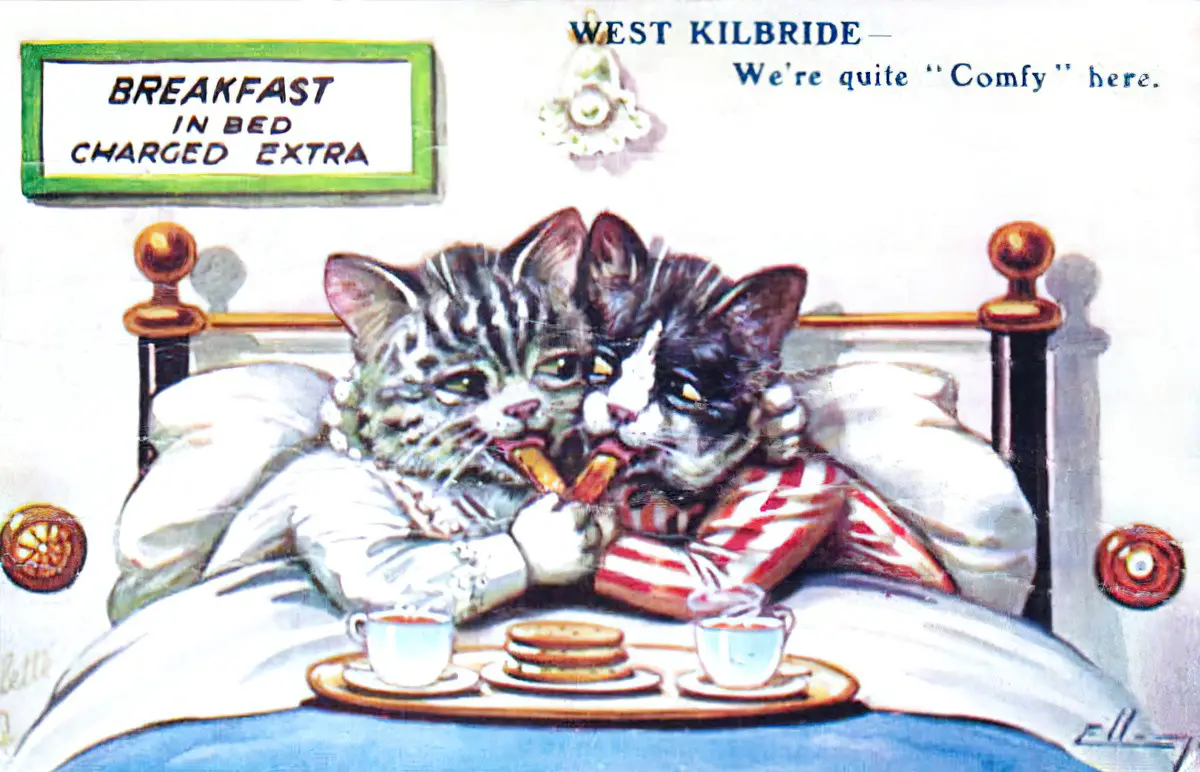
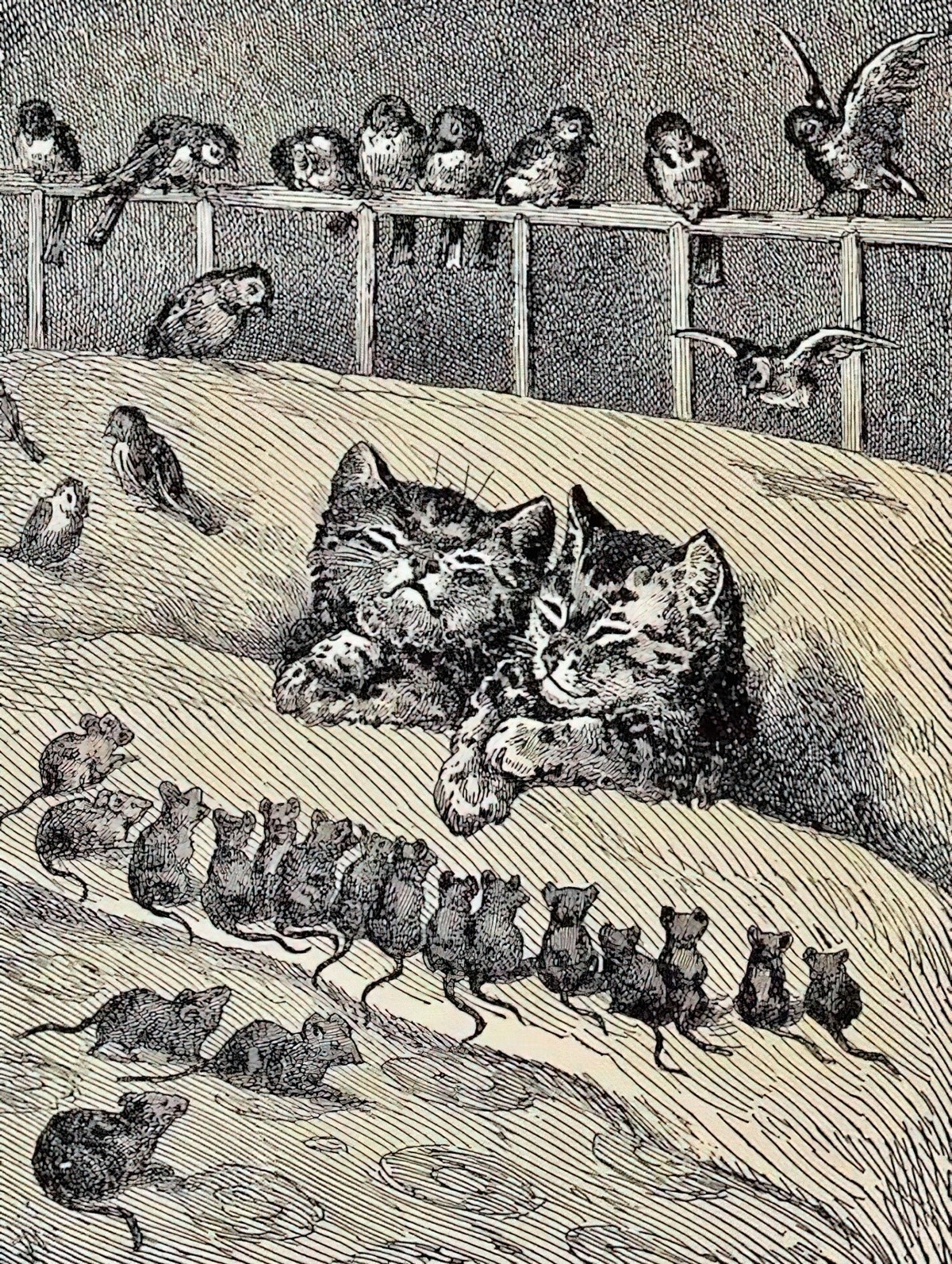
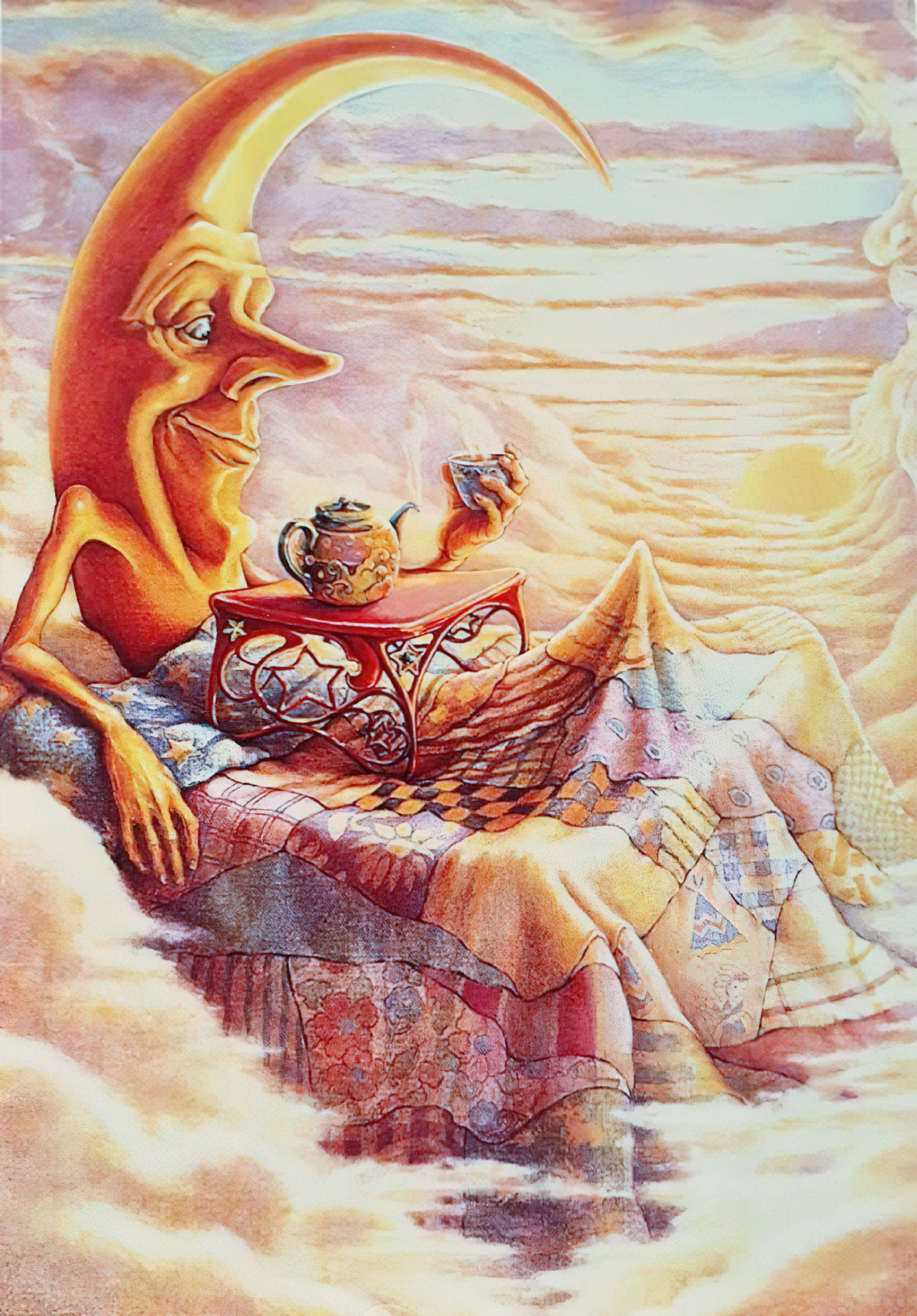
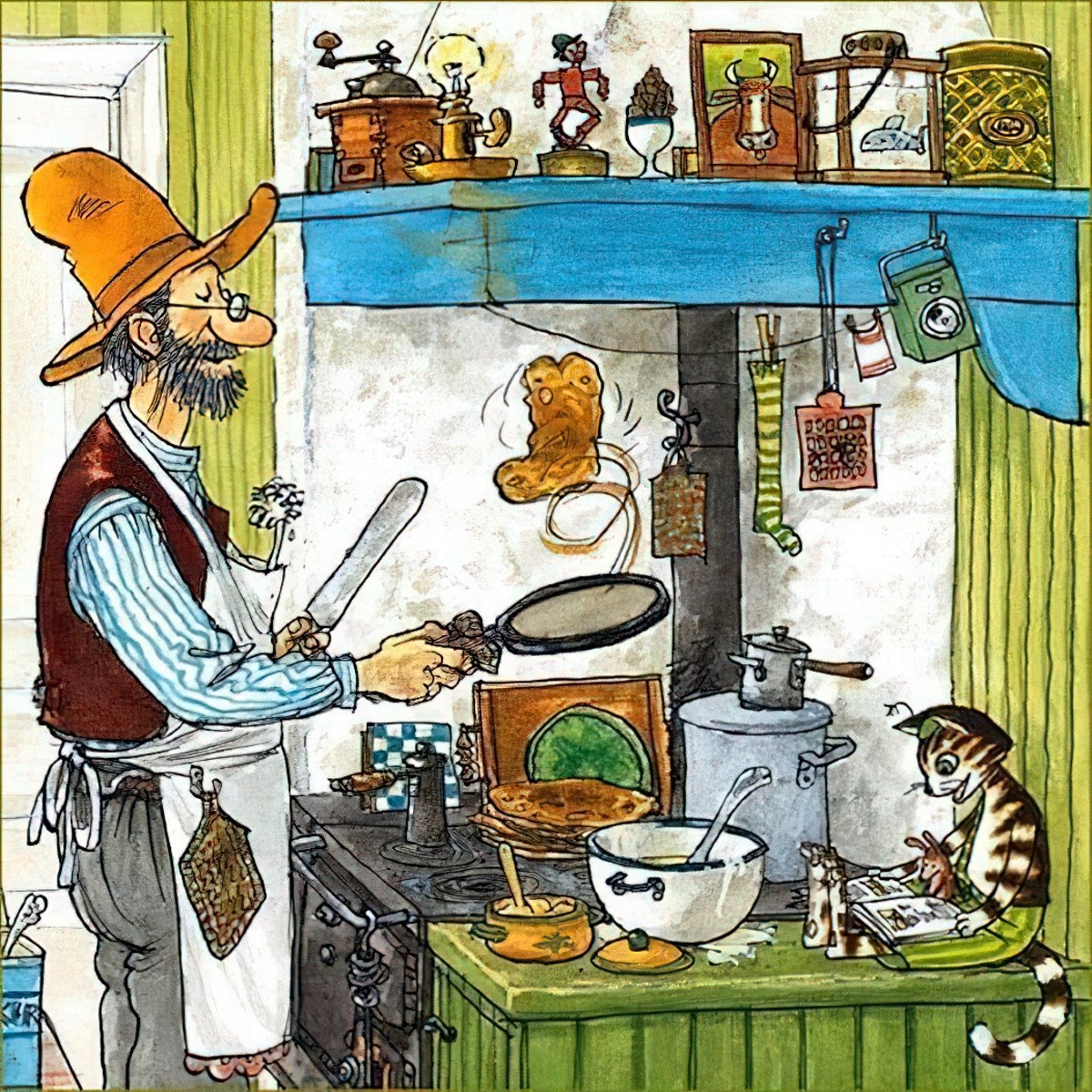
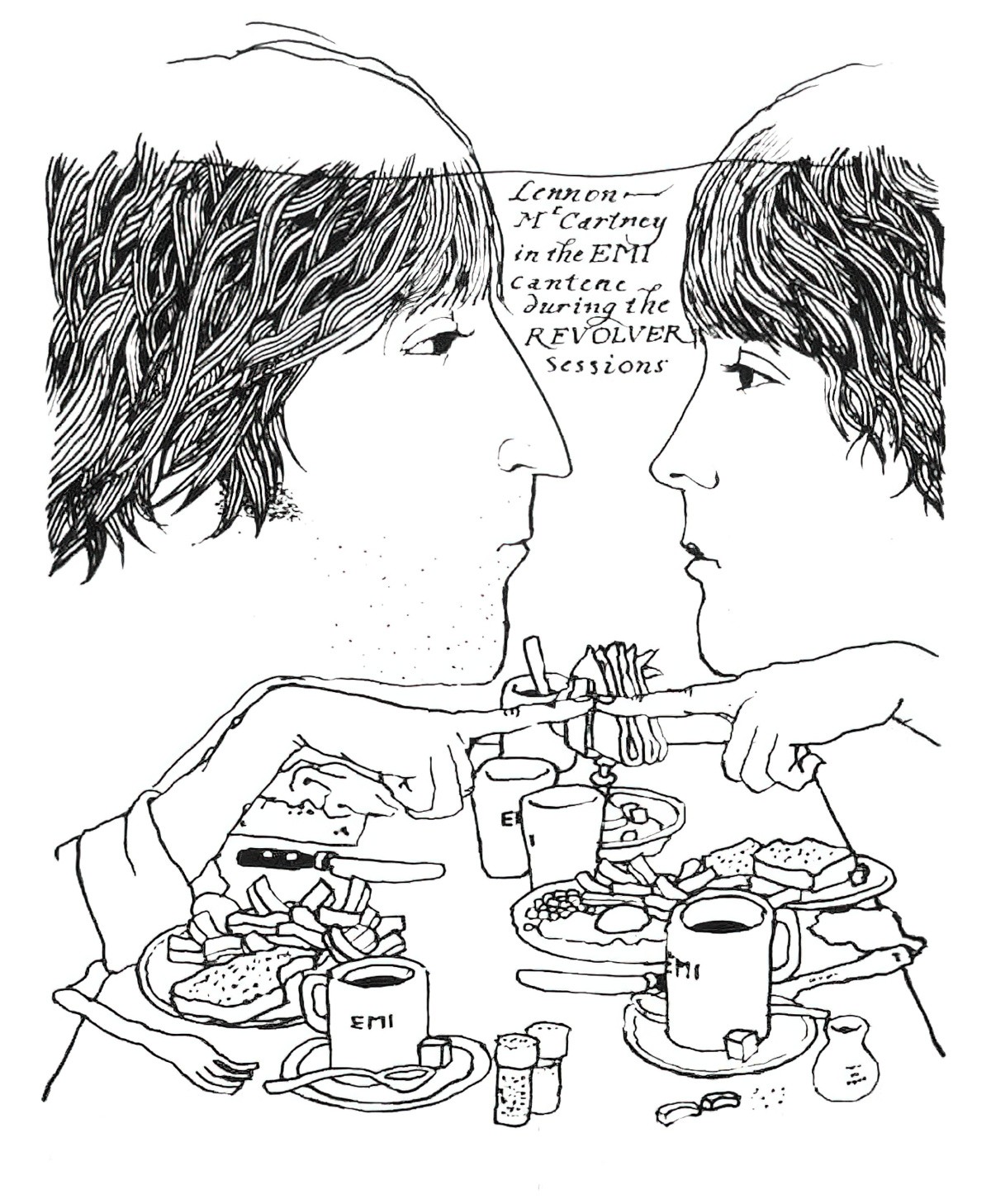
ENGLISH FOOD: A Social History of England Told Through the Food on Its Tables
A rich and indulgent history, English Food: A Social History of England Told Through the Food on Its Tables (William Collins, 2022) by Dr. Diane Purkiss will change the way you view your food and understand your past.
Dr. Purkiss uses the story of food as a revelatory device to chart changing views on class, gender, and tradition through the ages. Sprinkled throughout with glorious details of historical quirks – trial by ordeal of bread, a fondness for ‘small beer’ and a war-time ice-cream substitute called ‘hokey pokey’ made from parsnips – this book is both an education and an entertainment.
English Food explores the development of the coffee trade and the birth of London’s coffee houses, where views were exchanged on politics, art, and literature. Dr. Purkiss introduces the first breeders of British beef and reveals how cattle triggered the terrible Glencoe Massacre. We are taken for tea, to the icehouse, the pantry, and the beehive. We learn that toast is as English as the chalk cliffs. We bite into chicken, plainly poached or exotically spiced. We join bacon curers and fishermen at work. We follow the scent of apples into ancient orchards.
New Books Network
Most of us eat breakfast every day, but we rarely think of the the origins behind the meal. From etymology to cultural history – go deeper behind breakfast on this week’s episode of A Taste of the Past as Linda Pelacchio is joined by author of “Breakfast, A History”, Heather Arndt Anderson. Hear how the grab-and-go approach for breakfast has maintained over time and why grains have proven to be so important not only in the meal but in human evolution at large. Discover the early days of the Kellogg brothers as they searched a product that was easy to chew and ended up revolutionizing the way we eat breakfast. From corn to dairy and coffee to cocktails, dig deep into breakfast on A Taste of the Past.
“Breakfast was always a grab and go meal and that’s a trend that’s maintained over time.” [6:00]
“In the Renaissance, egg cookery was a pretty big deal. They found hundreds of new ways to cook eggs.” [21:00]
“Because of poor water quality in the Middle Ages, small beer was the most common beverage during breakfast.” [24:00]
–Heather Arndt Anderson on A Taste of the Past
Breakfast History
Header image is a Pure-Pak advertisement from 1960.
